

Blueberry-Mint Spritzer Recipe on Page 13





Blueberry-Mint Spritzer Recipe on Page 13



Flipside Records began in 1977, when 24-year-old music enthusiast, Neil Juhl, opened a used record store in a small space in downtown Kalamazoo. The store began with only an old-fashioned mechanical cash register, no bathroom, one sink and 2,000 records placed on racks that his dad built for him.
The store served as a local hangout, where patrons could spend hours browsing through record bins and discover unique artists at budget friendly prices.
It was situated on the southwest corner of the North Kalamazoo Mall and Eleanor Street, at 249 N. Kalamazoo Mall. The property was once home to the Uptown Theatre and currently the Kalamazoo Valley Museum.
Flipside Records expanded into a neighboring storefront by knocking out a wall, adding new records to their offerings per customer’s requests, clothing and other items. The walls were covered with posters, concert flyers, T-shirts, buttons and a variety of related merchandise. An eclectic selection of music was constantly blaring from the speakers. The atmosphere reflected the customer base of college students and music lovers of non-mainstream music, including: jazz, hip hop, punk, new wave, heavy metal and other such genres. The store wasn’t fancy, but the staff knew music and were passionate about it.
In the late 1980’s, a few of the businesses close to the corner estab-
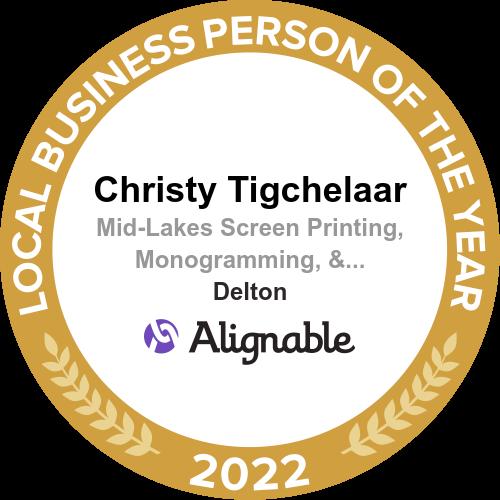
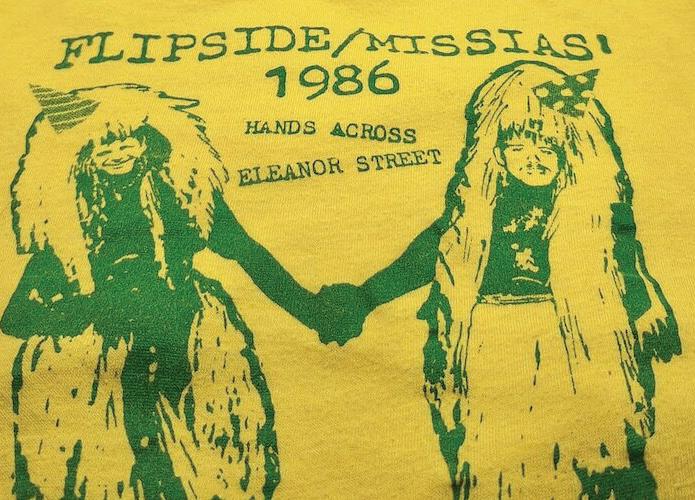
lished the Hands Across Eleanor event. Flipside Records along with Missia’s Bar & Restaurant and Mr. Presidents Restaurant and Cocktail Lounge created a parody of the “Hands Across America,” fundraising event that took place in 1986. The event included a pig roast, music from Missias’ jukebox (filled with a variety of oldies and new records by Flipside and a lot of neighborhood fun. They did actually hold hands and the line reached through the bar and all the way across to the record store. The idea turned into an annual block party that continued for 9 years.
The store moved across the street to 309 N. Burdick St, where Eleanor St. crosses N. Burdick, in 1990 and continued to flourish. They sold concert
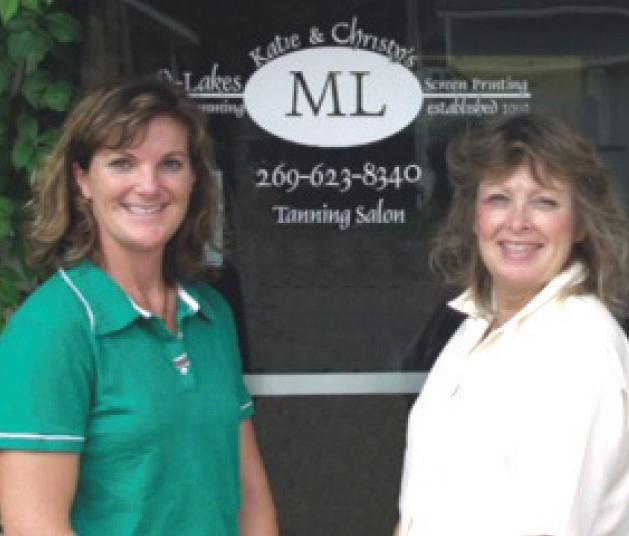
tickets and held performances in the store, including Fat Boys, Henry Rollins, The Flaming Lips and Fishbone. Juhl was proud to offer “Everything You Can’t Find at the Mall,” which became an advertising slogan.
Former patrons shared their fond memories of Flipside Records on the popular Vanished Kalamazoo Facebook page, including: “I loved Flipside!” “Great new & used inventory and better pricing than Boogie Records.” “Oh man I LOVED Flipside. I bought my Verve Pipe Cassette there, when they were only local.” “Flipside had amazing albums for as little as $1.” “Flipside RecordsKalamazoo...I miss that place...I went there nearly every week from late 1982 till when they closed in the
summer of 2001.”
In 1995, Juhl opened a second location in Kalamazoo’s Oakwood Plaza, which unfortunately closed a year later.
Flipside Records operated for over two decades and was one of the last remaining independent record stores in the Kalamazoo area before closing on July 31, 2001. Reasons for the closure include the industry slump that was caused by the internet and chain stores, along with opening a second location
The nostalgic Flipside sign is showcased at the KVCC Museum in downtown Kalamazoo in the exhibit, “The Art of Advertising.” The sign will be on exhibit until August 31st. In addition, Flipside logo T-shirts can be purchased at Kalamazoo Sportswear, located in downtown Kalamazoo.
Before opening Flipside, Juhl was studying education at Michigan State University in Lansing. After closing the store, he decided to get back to his original MSU career path and went to work as a school paraprofessional, and is now happily retired.
Jackie Merriam
Sources: KVCC Museum exhibit, KG 8/13/89, KG 6/13/21, KG 7/13/01, Second Wave on the Ground 1/16/25, Vanished Kalamazoo Facebook site, KPL.gov, Local History, Jan. 2025 “Flipside Records,” written by Ryan Gage.



One of the greatest benefits of having a garden is controlling how your food is grown. Growing organically ensures your food is free of commercial pesticides–pollutants that can transfer into the soil, water, and atmosphere. Starting an organic garden is the perfect way to provide clean, healthful food for your family, as well as help protect the earth.
Don’t fight your site, rather, embrace your sunlight levels, climate, and soil type by choosing varieties that will naturally thrive in your gardens’ conditions, reducing the need for excess water or amendment.
Submit a soil test for analysis to MSU Extension. By understanding your unique garden site, you can know exactly what amendments are needed, reducing and possibly eliminating pests, diseases, and pollution, which can be caused by overfertilizing. Improving soil by reaching the ideal 5–6% organic matter also helps conserve water and prevent run-off. Wedel’s can get you started with pH testing. The first 2 pH test
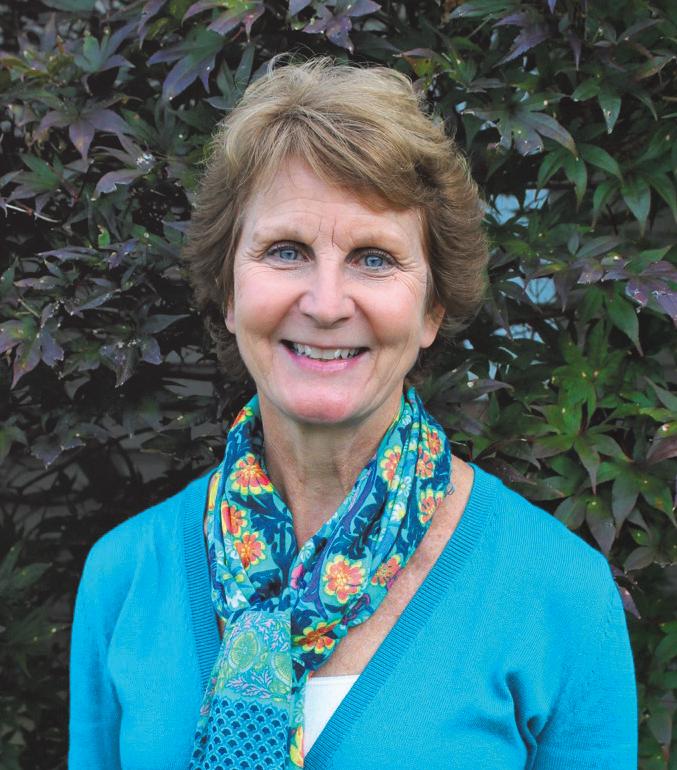
When we were in the Union Pier area in early May, we couldn’t help but notice the swarms of ladybugs along the shoreline. I was curious and Googled about this phenomenon.
are free and it’s 50¢ for each test after. A MSU Soil Test Mailer costs $26 and can be purchased online at https://shop.msu.edu/products/soiltest-mailer It includes testing for pH, Nutrient levels for phosphorus (P), potassium (K), calcium (Ca) and magnesium (Mg), organic matter percentage and personalized recommendations.
Conserve water by watering deeply and less frequently, encouraging plants to build deep, water-mining roots. Make sure you are watering with just the right amount; under- or over-watering can cause plant stress, which acts like an open invitation to pest and disease.
To slow water evaporation from your soil, water in the evening or morning and mulch to insulate and protect soil. You can also improve your soil’s ability to hold water by adding organic material.
Rotate plants in the same families (for example, brassicas) annually, so they are not grown in the same space for at least three years. Rotating
Ladybugs, multicolored Asian lady beetles, are native to Asia but was introduced to southeastern and southwestern areas of the U.S. in the 1970’s to control aphids (small sap-sucking insects). Ladybugs are located in Michigan because of the presence of the soybean aphid.
One reason for the swarms of ladybugs could be that they hibernated for the winter in nearby logs and are hungry, seeking the shoreline to drink. Another theory is that they are gathering because of their reluctance to cross the water. Still another is related to the wind blowing east or out to sea, and they are clumping together for warmth. These swarms or aggregations enhance their defenses and are handy for
reduces the potential for disease and depletion of the same nutrients year after year.
You can also diversify your planting area so it isn’t all one crop. Having different crops mingled together confuses pests and looks less like an all-you-can-eat buffet for them. Scout for pests, diseases, and natural predators weekly so you can identify problems early and decide if action is needed.
If you find a problem, first choose physical controls (e.g., row cover, plant removal, or trap crops) or biological controls (e.g., inviting beneficial insects or insect-eating birds). Invite beneficial insects to the garden by sowing flowering varieties that they are attracted to (e.g., borage, alyssum, and dill).
This way, when pests arrive, you already have a hungry, resident army “waiting in the wings”. Use organic pesticide (e.g., soaps or neem) as your next option, spraying in the early morning or evening when most bees are less active and avoiding spraying flowers to protect pollinators.
Cover crops enrich the soil, fight weeds, and break up compacted soil
sharing mates and resources.
You may also have noticed more ladybugs inside your home, where they are simply seeking warmth. Ladybugs are traditionally seen as symbols of good fortune, and when they appear to you, can signify that abundance and prosperity are near. But wait, don’t quit your job just yet! This doesn’t always mean material wealth – it could also refer to emotional or spiritual richness.
In short, the ladybug swarms at beaches and in your home are temporary and will subside once the warmer temperatures arrive.
Jackie Merriam
naturally. Cover crops can also be used to create an insectory (a dedicated area that provides habitat for beneficial insects).
Reduce landfill waste by composting yard scraps and food waste. Plant-based food scraps and yard waste create methane in a landfill environment which, unharnessed, is a pollutant. However, in your garden, this material can be converted into organic compost, which is a great soil amendment. Avoid composting any disease or pest-infested material. See your garden as a living system and over time you’ll learn patterns in your garden habitat. For instance, it is common to see predatory insects like ladybugs quickly follow an influx of pests like aphids. Gardening the organic way has us look for a balance rather than striving for a pristine and lifeless space. Let’s embrace the Japanese principle of simplicity and the perfectly imperfect, called wabi-sabi, in the garden and enjoy the beautiful journey!
Lorin Nielsen from Botanical Interests with edits from Wedel’s

Graphic Designer: Lauren Ellis Editor and Publisher: Jackie Merriam
This publication does not specifically endorse advertisers or their products or services. No part of this publication may be reprinted or otherwise reproduced without the written permission from the publisher.
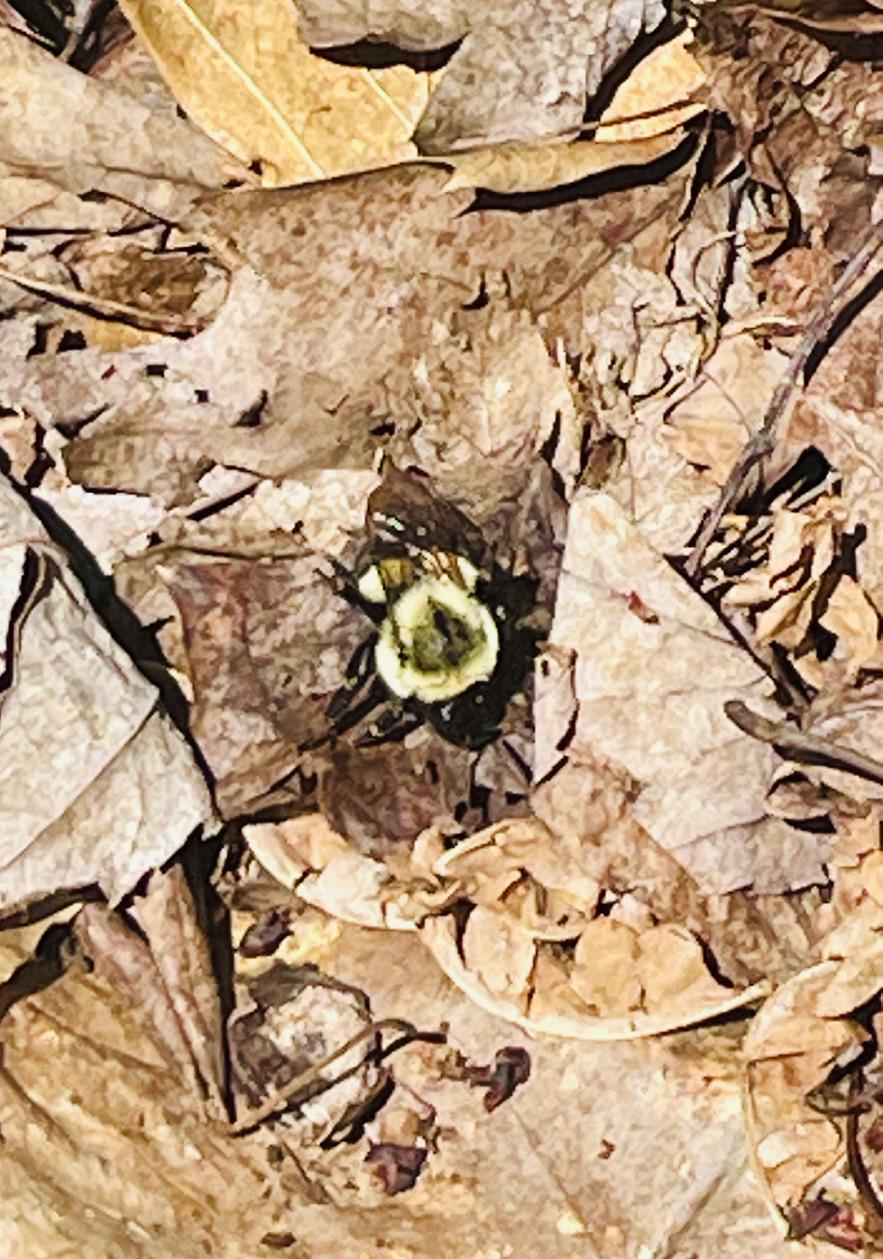
When was the last time you followed a Bumble Bee? Or any little bug or little critter? Did you ever do that as a child? Inquisitive, adventurous, fearless youth? Some of us have become so removed from nature that we may not spend much time in nature and watch beings living life around us. Last month, I spent 15 minutes following a Bumble Bee. I didn’t go far, but I did get myself turned around and slightly confused trying to figure out where I was and from where I started. Not truly lost, just lost in my head. What I learned is that I know very little about bumble bees and can make broad, textbook, dismissive assumptions. This bee wasn’t necessarily interested in pollen, at least at this moment; in fact, it flew past a few flowers. It was on a mission for sure. I watched as it buzzed around and stopped on the forest floor to crawl under dead leaves. I’m not sure if it was finding a safe space to rest from birds, looking for droplets of water, finding decaying plants, or looking for a fellow bee, but I have never really taken the time to watch or care. The bee would fly a few inches above the ground and only a few feet at a time. It led me to many places in such a short time

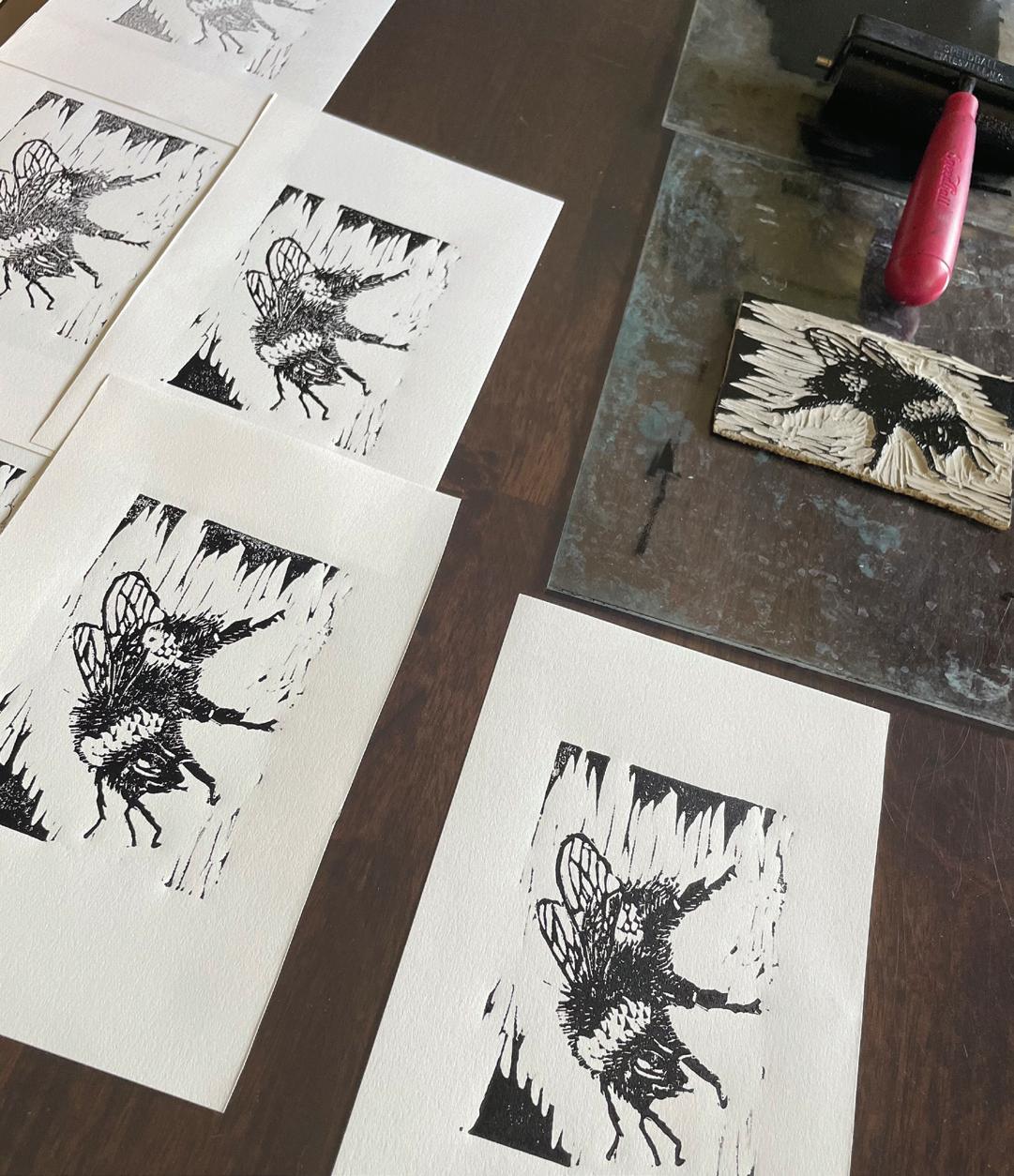
and space. At one point, it landed only a few feet nearby a resting Wild Turkey. That started both the bird and me. It flew under and around a tree and continued just a few inches above the shadows the branches cast underneath. The branches were full of dead leaves. I watched the shadows move in the wind. The leaves started to look like a flock of birds, and if you listened, the dryness in their fluttering started to sound like their own form of buzzing. Oh, how much everything is connected. This short time taught me that I don’t really know bumble bees or their behaviors. I wonder how much I don’t really know people and other things around me. The only way I learned more about this specific bee was by quietly listening, observing, and following it. We might do the same with people. We think we know them, based on their appearance, or a brief interaction, maybe a visual presumed classification, like what type of transportation they’re using, where they live, what they eat. We all build stories in our heads based on observations. The shorter the observation, the more inaccurate the assessment. If you take the time to engage and pay attention to people and beings
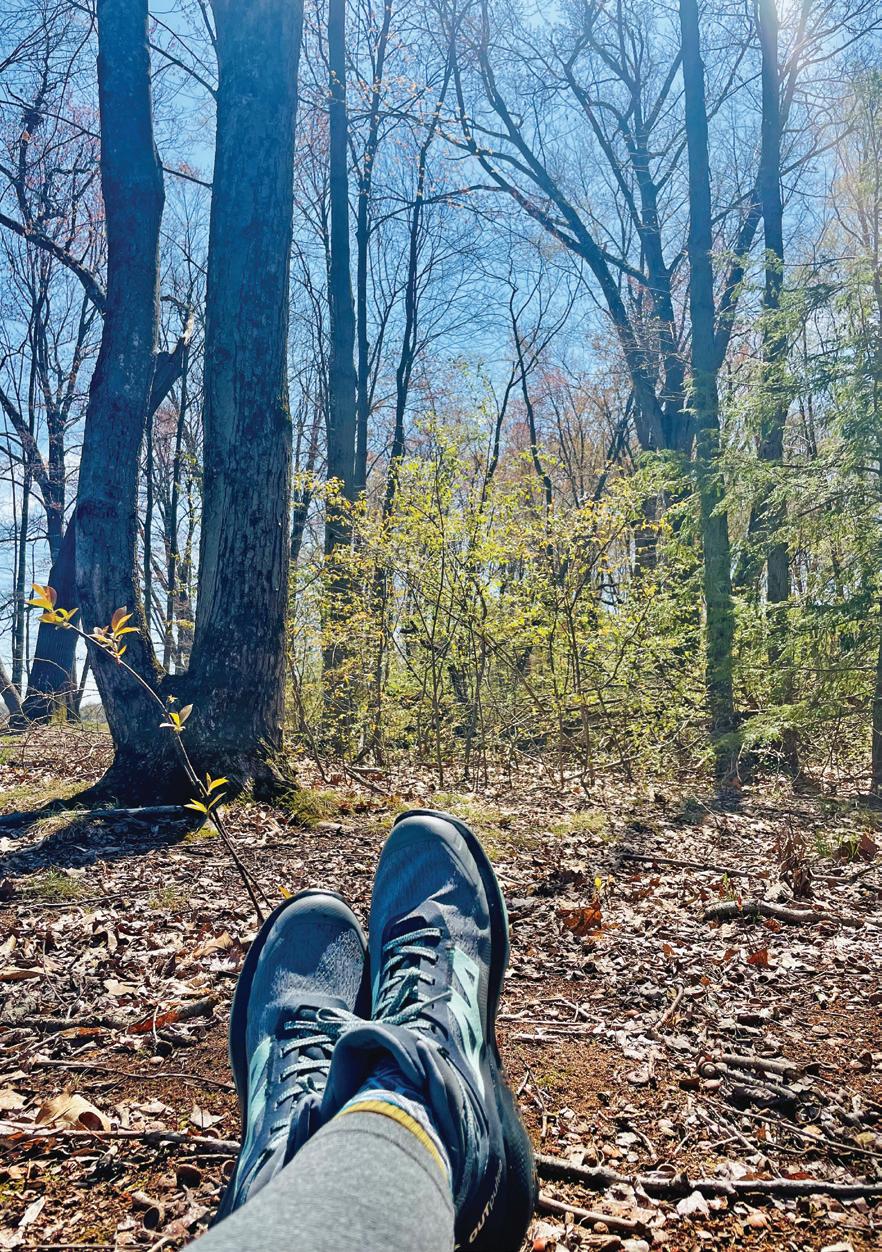
around you, do you think your quick judgment would be confirmed, or would you maybe learn something unexpected and new? And perhaps interacting with others and with nature could bring you to other interesting moments you might otherwise miss. I thanked this bumble bee. I thanked the tree that still had its dead autumn leaves. I thank you for
spending this moment and this time with me. Follow the bee, 20 free original art prints are randomly included in this month’s issue of the Good News Paper.
Peace, Love, and Art. -Amy Instagram: @amylgieschen



Some of the most meaningful things we write aren’t meant to impress—they’re just honest attempts to catch a moment before it slips away. Just you, your thoughts, and the page. Whether it’s a journal entry, a Facebook post, or scribbled notes on the back of a napkin, personal writing has a way of capturing what matters—even if we don’t realize it at the time.
Each week, I post something I call my “Saturday Afternoon Post” on Facebook. It’s my little ritual— a reflection, a story, a slice of life I share with family and friends. But I also keep a printed copy of each one. Why? Because I believe there’s a bigger story taking shape. One I hope to pass on. You see, one of my biggest regrets is that I never really talked with many of my relatives. Oh, we spoke—small talk, polite greetings— but I never asked about their dreams, their heartbreaks, or what made them tick. I missed their stories. Now, through writing, I’m trying to bridge that gap for my own children, grandchildren, and maybe even greatgrandchildren someday. I want them to know me—not just as a name or a face in a photo, but as a full person who laughed, wondered, worried, and tried to make sense of it all.
At its core, personal writing is self-expression. It’s not about being

“a writer.” It’s about capturing your thoughts and experiences. That might be in the form of a journal, a blog post, a heartfelt letter, or a memory jotted down on the fly. The only real rule is honesty. You don’t have to be profound. You don’t have to be polished. You just have to be real. For some of us, writing is how we figure things out. I once had a boss who couldn’t understand why I kept drafting write-ups of my ideas. “You don’t have to go to all that work,” he said. I told him, “Writing is ‘how’ I think.” Putting thoughts into words drives clarity. It makes me ask: Is this really what I mean? Is it true? Is it useful? Often, the first pass is fuzzy. But writing gives it shape. Joan Didion once said, “I don’t know what I think until I write it down,” and I think many of us feel the same. It is the same for words. The first word that comes to mind isn’t necessarily the best. Mark Twain once wrote, “The difference between the almost right word and the right word is really a large matter—it’s the difference between the lightning bug and the lightning.” Likewise, it’s also a good to eliminate words that don’t need to be there—unnecessary word clutter that doesn’t add to the conversation.
Writing allows us to slow down and reflect. It helps us see how
far we’ve come. It relieves stress, improves mood, and even sparks creativity. Whether we’re journaling to manage anxiety, working through a tough decision, or simply capturing a funny moment that day, we’re doing something meaningful. We’re making sense of our world.
And while personal writing is first and foremost for ourselves, it can also matter to others. A simple journal entry, years from now, could give a child or grandchild a deeper understanding of who we were and what life was like in our time. Diaries and letters have shaped how we understand history—consider Anne Frank’s journal, which began as a private record and became one of the most important firsthand accounts of World War II. Our own stories, however small they may feel, have the potential to resonate, inspire, and connect.
Not everyone knows where to start. But writing doesn’t need to be a grand project. It can begin with a few sentences a day about how you’re feeling or what you noticed. A teacher I once had in middle school, Miss Webb, said something that has always stayed with me. She was addressing “how to start a paper’; she said, “Just start writing something, the rest will flow and what you started with will probably be change before you fin-
ish.” It can be a letter you never send, or a description of a moment instead of just snapping a photo. Even five minutes a day builds a habit.
And if you like a good challenge, there’s NaNoWriMo—National Novel Writing Month. Every November, writers from all over the world set out to write 50,000 words in 30 days. It’s not about being perfect. It’s about showing up and writing your story.
And if long-form writing isn’t your thing, there are also services like Storyworth and Legacy Books that help families preserve their histories. They send prompts, gather stories, and turn them into printed keepsake books—something future generations can hold in their hands and treasure. So much of life slips by unrecorded—small thoughts, quiet moments, fleeting feelings. But when we write, we catch some of it. We hold it up to the light and say, “This happened. This mattered.” That’s the heart of it, really. Not to impress, but to remember. To connect. To leave behind more than just photos and dates, but glimpses of who we really were. And maybe, one day, someone we love will read our words and feel a connection.
James D. Coppinger






TTheDeheDevilsvils Joe Abercrombie (Tor Books)
In an alternative medieval Europe, a young monk is tasked to lead a disparate group of supernatural beings on a holy quest using very unholy methods. Abercrombie's endlessly quotable wit, deft character work, crackling dialog, and gift for large cinematic action set pieces are on full display. This novel about found families will absolutely draw in new readers.

TThe Names: A No he Names: Novveell Florence Knapp (Pamela Dorman Books)
This debut novel is told in three alternating storylines based on three different names that the main character could have been given at birth. What results is a beautiful and nuanced story of a family attempting to survive and overcome domestic abuse and forge their own identities in the process.
Sweetland, Manchester Public Library, CT
read-alike: The Paper Palace by
Can't Get Enough Get Kennedy Ryan (Forever)
Hendrix, a strong, intelligent Black woman, has big goals and no time for love. Then she meets billionaire Maverick, and everything changes. The characters are compelling and have strong chemistry.Ryan continues to excel at bringing big topics—in this case Alzheimer's and racism—to her romances.
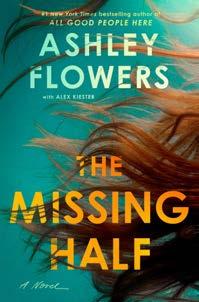
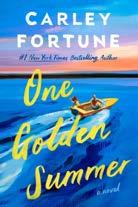
Alice is more comfortable behind a camera than living her life. When her Nan has surgery, Alice takes her for rest and relaxation at their favorite lake cottage. Alice falls for their handyman neighbor Charlie, who brings her out of her shell and lets her discover who she really is in this fun and flirty romance.
TThe Missing Hal he Half: A Nof:Novveell Ashley Flowers with Alex Kiester (Bantam)

Nic has been messed up since her older sister went missing.Enter Jenna, who is searching for connections between her sister's disappearance and Nic's. They decide to work together to uncover what happened, but the deeper they get the harder it becomes. A twist ending completely turns the tables on this tightly written thriller.
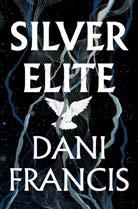
In a grim future, a military dictator sends forces after modified humans with psychic powers. Most have a tell when they use their powers. Wren wants revenge on those who destroyed her family, but she has a secret: she has powers, but no tell. Nonstop action, great worldbuilding, and a blisteringly hot enemies-to-lovers romance make this a winner.

In FirgedFire: A Noe: A Novveell
HazelMcBride (Delacorte Press)
Stakes are high for the kingdom of Tir Teine. A toxic influence looms in the form of the True Religion, a patriarchal group that condemns magic. Aemyra is fierce, headstrong, and unapologetically ambitious as she prepares to claim the throne. Fast action, romantic drama, mythical creatures, and the sinister allure of a dangerous cult will pull readers in.
TTheBusheBusybody Book Club ybody Club Freya Sampson (Berkley)
In this modern take on a classic small-town mystery, book club members get drawn into amateur sleuthing when money to repair the town's community center goes missing. The characters are well drawn and likable, the setting is cozy, and the motives are plentiful. The mystery twists and turns with several reveals leading to a satisfying conclusion.
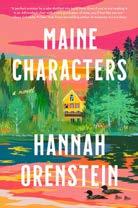
Two half-sisters meet for the first time at their father's lake house after his passing. Lucy and Vivian have led very different lives and knew very different versions of their dad. Readers will enjoy the characters, setting, and the twists and turns this story delivers.

Made in LibraryAware- www.libraryaware.com
The tale of Yeva, a masked dragon slayer who has never felt truly at home, is both mythic and achingly human. Her journey to Quanbao sets the stage for an exploration of identity, duty, and love. The world building, storytelling, and representation has made Yang an author to watch in the realm of queer fantasy.
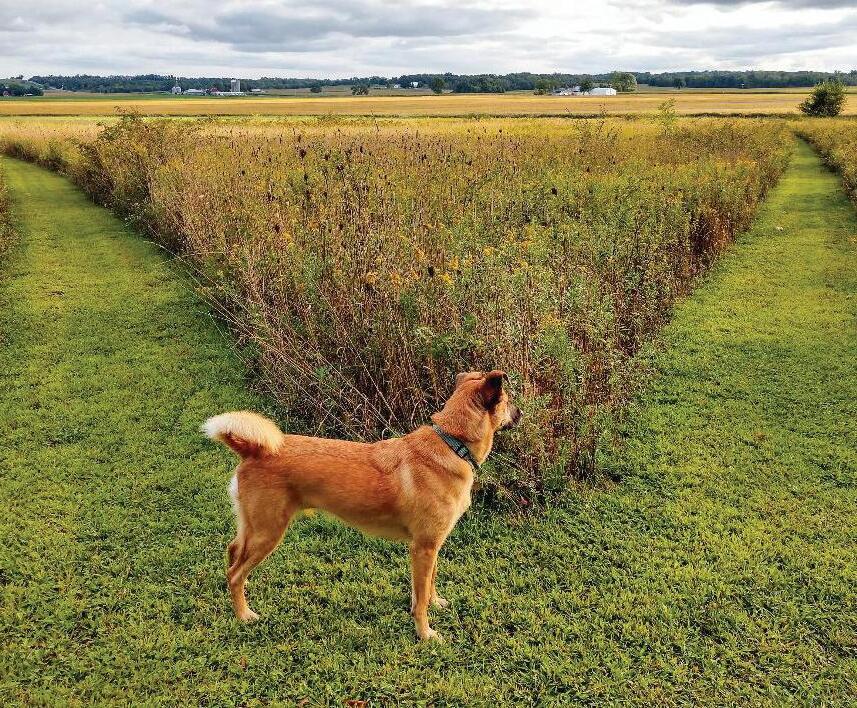
Almost 14 years ago, when I first moved to my beloved Z Acres and its 10-acre plot, I took a look at the lawn to see how much of it I would mow. Not 10 acres. The back five was left to meadow. Another couple acres to the south were all wooded. The remaining three or four acres surrounding the little red farmhouse were enough to cut.
At my prime, I figured I would cut those remaining acres with a little Fiskars push mower, the one with no
engine, just rotating blades. Second summer, I happily accepted a handme-down mower with an engine, but not self-propelled, from my father. Third summer, feeling my age, I used a self-propelled mower. By the fourth summer, I flew the white flag of surrender and bought a John Deere tractor, or riding mower. Smart. Having a tractor also opened up my back five acres to mowing a path. I mowed an oval around its perimeter with a huge Z across the center. My dog

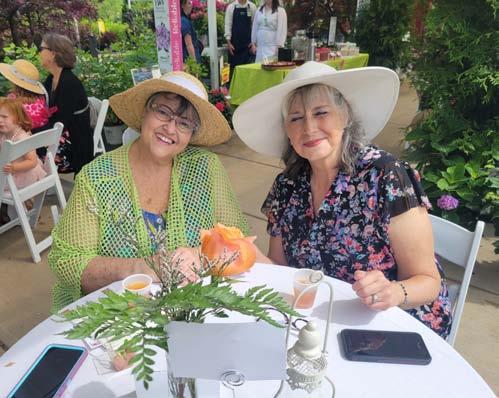



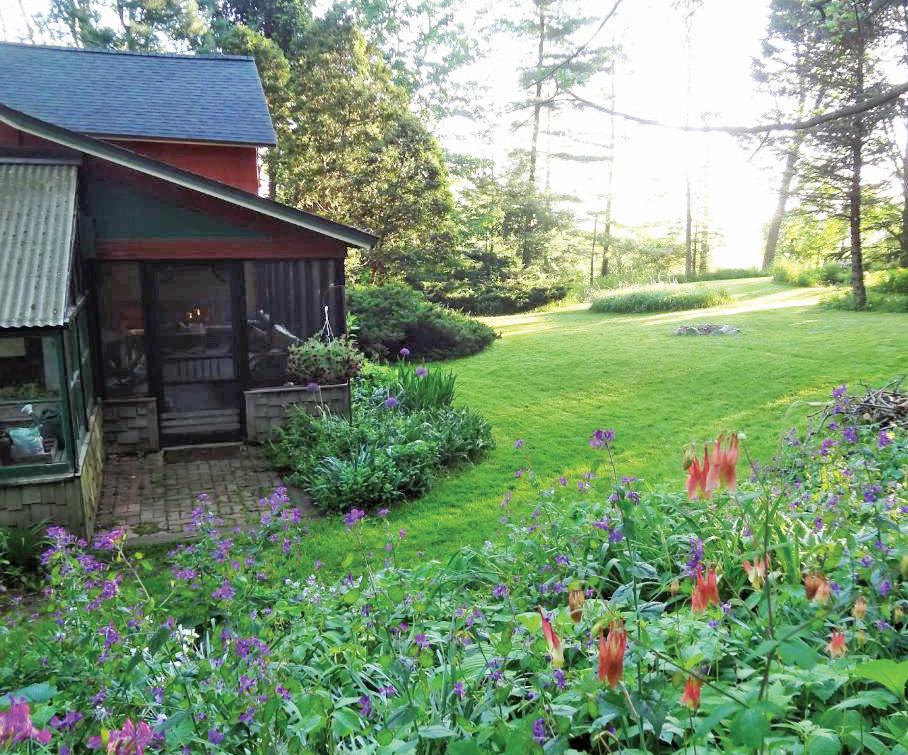
Polly and I love walking that path every day.
With all that, I have continued to ponder how to reduce my mowing even more. I have learned that landscaping is in transition. Manicured grass lawns are on the way out. Gas mowers are a top pollution contributor, and we won’t even talk about the nasty pesticides and insecticides and weed killers sprayed over that grass to keep it crazy green. We are killing the bees that pollinate our food crops. We are making the air and soil toxic. It is time to change our lawn maintenance habits.
I have been contemplating alternative lawns, and I am finding many exciting—and stunningly beautiful—options. Some of these options eliminate mowing completely. Others substantially reduce how often we should mow.
One of the most popular lawn alternatives is clover. Indeed, it is my choice. Clover is a low-maintenance ground cover that is sometimes planted in gardens during off seasons to keep the ground from eroding while adding beneficial nitrogen to the soil while remaining beneficial to pollinators. Deep roots help to aerate the soil. While possibly requiring more watering up front, until it is firmly established, once the clover has
taken hold, it won’t require mowing or fertilizing.
In other, more shady areas of my lawn, I am encouraging moss. Such a lovely, velvety carpet! It is one of my favorites. Digging up sections of moss and introducing the pieces into other areas works well—keep the sections moist until they root. Success rates are high for transplanting, requiring no mowing or fertilizing. Check out other creeping varieties of plants, many of which bloom in a variety of colors: Creeping Thyme, Blue Star Creeper; Creeping Wire Vine; Veronica Waterperry Blue; Creeping Jenny; Green-and-Gold; Bugleweed; Fescue, and others. Research your zone and typical weather conditions.
If ground cover isn’t your thing, consider creating a rock garden, using gravel and rocks with plants interspersed. If you are into gardening, turning your lawn into a food or herb garden has many obvious benefits. Some suburban neighborhoods permit meadow gardens, filled with wildflowers, or rain gardens to preserve water hydration.
And shut that tractor down. Use your gas and time savings for a summer barbeque and enjoy.
Zinta Aistars



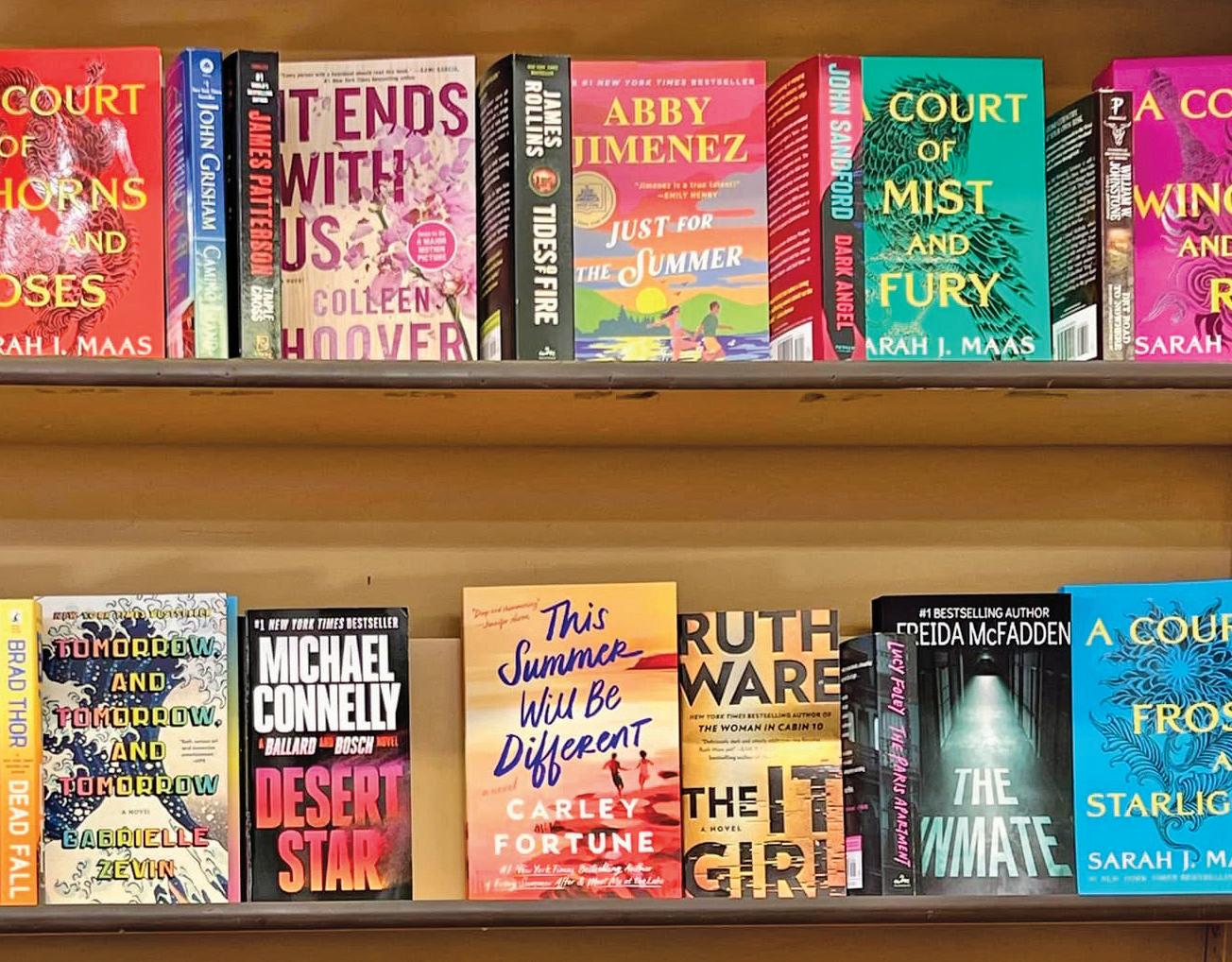
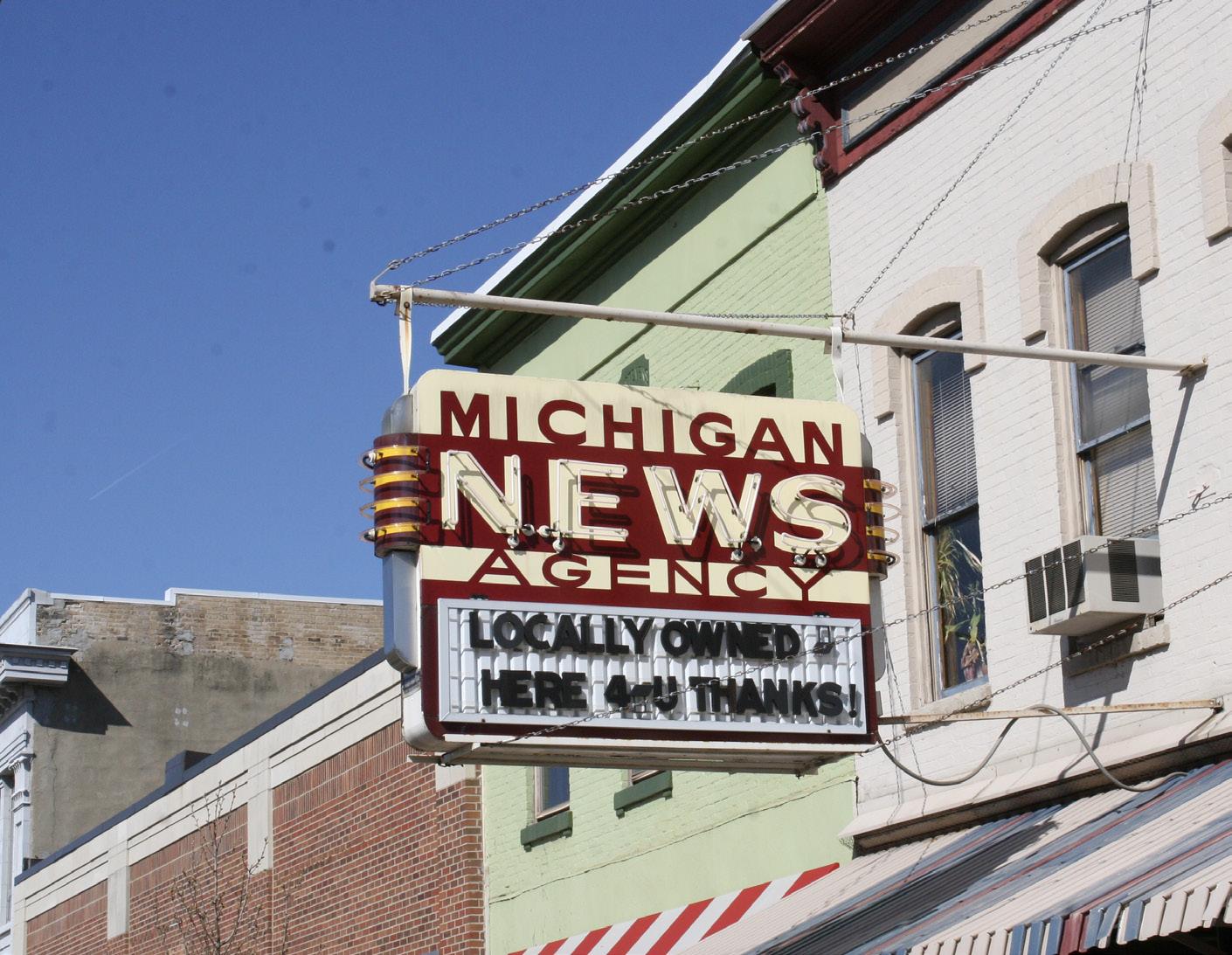
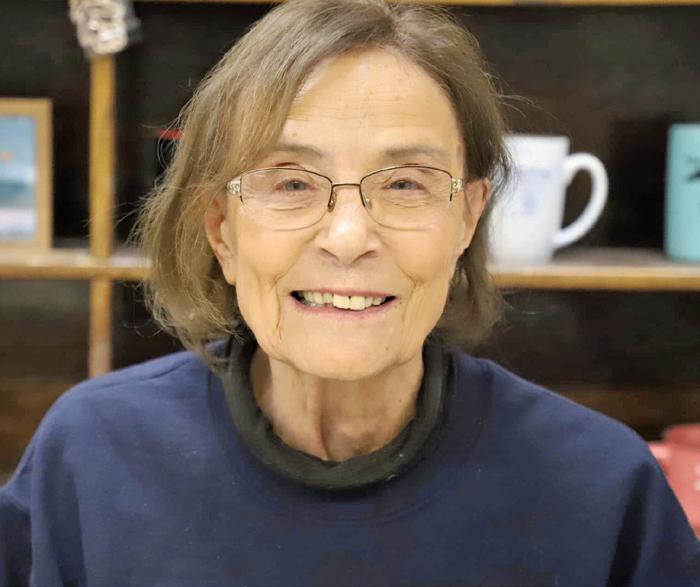
I am writing this just a few short days before a celebration of life takes place for a bright beacon of generosity, kindness, compassion, empathy, grit, wisdom, humility, perseverance, courage, encouragement, respect, dignity, hope, and love. For Dean Margaret Hauck, owner of Michigan News Agency, a lighthouse for the Kalamazoo community and anyone fortunate to have their path intersect with Dean. If only for a moment, a season, or a lifetime.
My encounters were a few moments at a time. Like the first moments Dean graciously, with open and wide arms, welcomed me placing copies of two books I had authored on her shelf. She was not concerned with the size of the readership I already had, a necessary requirement for bookstore chains. What mattered to Dean was her ability to support a local author. I anticipate in the welcoming and encouraging words Dean spoke to me was her wise soul seeing the look of self-doubt in my eyes. Her astuteness and generosity influenced and inspired my selfconfidence.
Or when she needed my books replenished. Dean’s celebration with me of the copies sold was a gentle reminder that less is always so much more, and that the reward reaped is in what we are able to give to others, whether in the form of our words or our presence. Her beautiful and encouraging words to me became my keepsake. Spoken from someone who knew in ways I could only listen and imagine that life itself is a gift and every day we can give something of ourselves to another ensures we never waste the gift we are given. Or when I was exiting the door of Michigan News as a homeless gentleman was entering. Dean’s welcoming hello gave dignity to this individual.as she recognized that he needed a few moments of physical warmth and human connection.
I have a nearly two-year old, saved voicemail from Dean requesting replenishment. Though our encounters were moments at a time, my path crossed with Dean during a season of my life. I think I will hold onto her voicemail for a while, a reminder of an extraordinary individual who made this world a better place during her lifetime.
In loving tribute, I will leave you with a poem by Mary Oliver and an excerpt from “Consolations: The Solace, Nourishment and Underlying Meaning” written by another poet, David Whyte.
Don’t Hesitate, by Mary Oliver
If you suddenly and unexpectedly feel joy, don’t hesitate. Give in to it. There are plenty of lives and whole



towns destroyed or about to be. We are not wise, and not very often kind. And much can never be redeemed.
Still, life has some possibility left. Perhaps this is its way of fighting back, that sometimes something happens better than all the riches or power in the world. It could be anything, but very likely you notice it in the instant when love begins. Anyway, that’s often the case. Anyway, whatever it is, don’t be afraid of its plenty. Joy is not made to be a crumb. Giving, by David Whyte Giving has an enormous horizon and a breadth that is hard to compass: it is both a practicality – it creates bonds and dependencies nec-
essary to our communal well-being – and an essentiality – the essence of giving being that the other person is simply alive and, by corollary, not only a privilege to know but a living privilege themselves, who has the astonishing ability to acknowledge both the somebody who has given and the something that is given to them. As far as we know, no other corner of creation but a human being has the ability to fully acknowledge the spirit of another in this way.
Rest in peace dear Dean.
Christine Hassing https://christinehassing.com


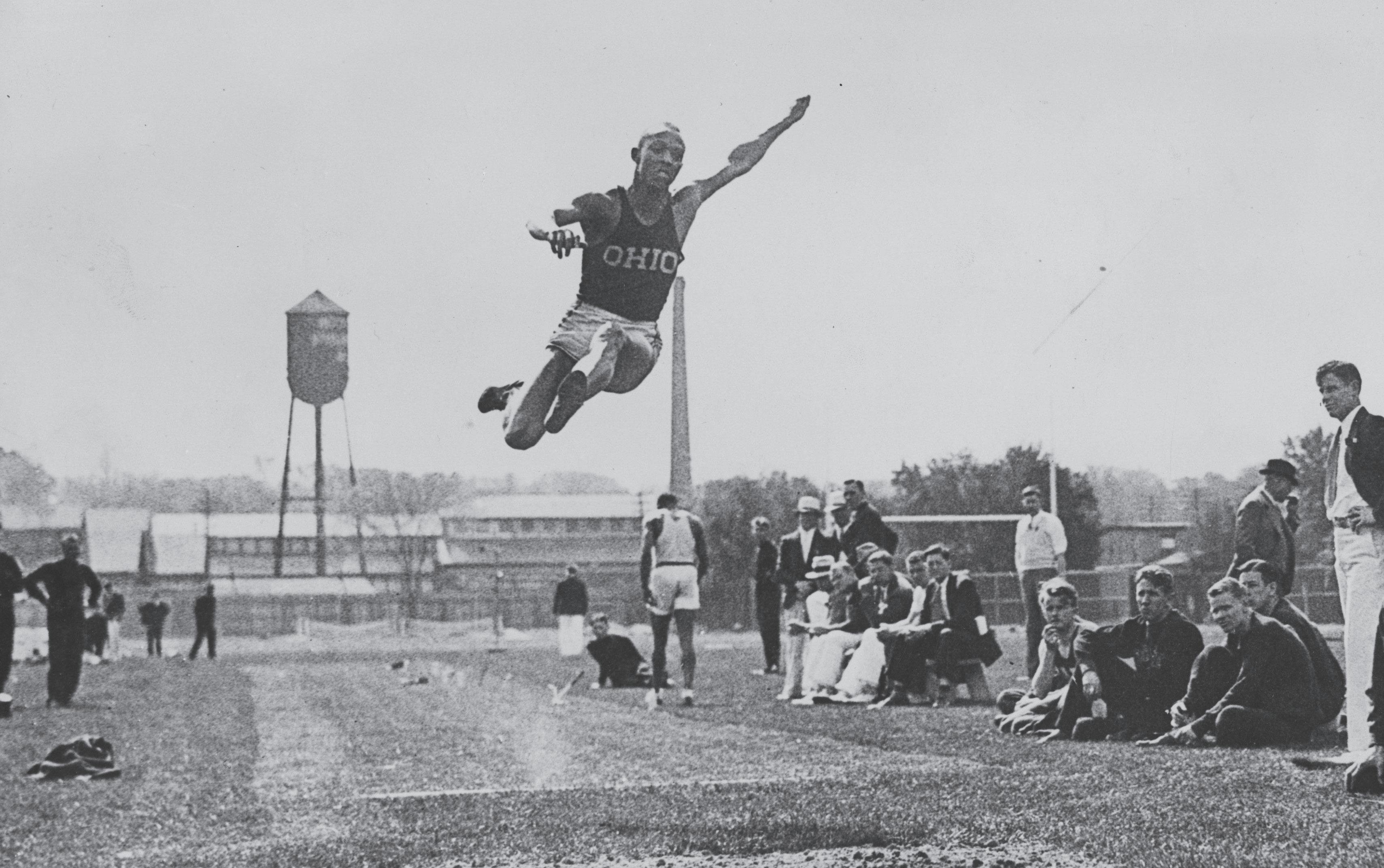
Jesse Owens’ Day in Ann Arbor 90 years ago may be greatest athletic accomplishment ever Sports aficionados have their favorite all-time greatest performance, such as Wilt Chamberlain’s 100point game, Team USA’s Miracle on Ice, or Willie Mays’ over-the shoulder catch. And one remarkable performance that took place in Michigan 90 years ago is thought by many to be the greatest ever.
The Big Ten conference track and field meet took place at Ferry Field in Ann Arbor on May 24-25, 1935. The best runners, throwers, and jumpers in the conference were at the meet, with many fans excited to see two particular exceptionally talented athletes, both of them Alabama natives whose families had moved north during the Great Migration: Michigan’s Willis Ward and Ohio State’s Jesse Owens.
Willis Ward excelled in the dashes from 100 to 440 yards and the high jump and long jump, was an eighttime Big Ten champion, and was the Associated Press Big Ten Athlete of the Year in 1933. The 6-foot-1, 185pound Ward was also just the second African American to play football at Michigan. In five previous headto-head races against Owens, the “Buckeye Bullet” had won three races and Ward two. However, Ward had a slight injury, and he didn’t compete in the running events that weekend. (He did the jumping events, winning the high jump and finishing second to Owens in the long jump.) One student in the stands, disappointed that Ward didn’t run, was Ward’s friend and football teammate, Jerry Ford.
Owens was also injured, having hurt his back “tumbling down a flight of stairs during fraternity hijinks.” Owens and his coach, Larry Snyder, agreed that Owens would try competing but would back out if there were any signs of further injury.

Despite the concerns, Owens’ competitive streak pushed him to run all-out, and the result that Saturday afternoon, May 25, 1935, was an achievement not seen before or since.
At 3:15 p.m., Owens overcame a slow start to win the 100-yard dash in 9.4 seconds, tying the world record. (More than half of the timers showed that Owens ran 9.3 seconds, setting a new world record, but rules stipulated that the slowest clocked time would be recorded.)
Just 10 minutes later, Owens broke the world record in the long jump by more than half a foot, jumping 26 feet 8 ¼ inches, a record that lasted 25 years. Nine minutes after the jump, Owens broke the world record in the 220-yard dash by 0.3 seconds. Because that distance is slightly longer than 200 meters, Owens was also credited with breaking the world record for that Olympic-standard metric distance.
Finally, at 4:00 p.m., Owens became the first person to run the 220yard hurdles in under 23 seconds, a new world record, also giving him the world mark in the 200-meter hurdles in the process.
Owens set five world records and tied another in a span that Sports Illustrated called “the greatest 45
minutes in sports history,” and “without parallel in any sport.” Owens’ performance in Ann Arbor that afternoon was so significant that diehard University of Michigan athletic director Don Canham had a plaque installed honoring Buckeye Owens at Ferry Field, smack-dab in the middle of Wolverine Country.
The following year, 1936, Owens
won four Olympic Gold Medals at the Berlin Games in front of 100,000 people including Adolf Hitler. Those games became a Nazi propaganda showcase that would be the last Olympics for 12 years because of World War II. And as that last Gold Medal was awarded to Owens, his athletic career was over at age 22. (Carl Lewis ran his final race at age 36, Usain Bolt at age 31.)
Jesse Owens, one of the world’s greatest athletes, died in 1980 at age 66, but his achievements in Ann Arbor and Berlin will be remembered for many years.
Tony Ettwein
HistoryZoo1837@gmail.com
Photo
A. Jesse Owens wins the 1935 Big Ten long jump, breaking the world record by almost six inches
B. Reigning Olympic 100 and 200-meter champion Eddie Tolan of Detroit (left) talks with Michigan’s Willis Ward (center) and Ohio State’s Jesse Owens.

As parents, we all want the best for our children—happy, healthy, and ready to take on the world. But what if the secret to their growth and development lies in something as simple as play? Whether it’s building block towers, running around the yard, or diving into a make-believe world, play isn’t just a way to pass the time. It’s how kids learn, grow, and discover who they are. So, let’s dive into the world of play and see why those giggles and games are more important than you might think.
Play is essential for physical, cognitive, social, and emotional development. It helps children explore the world, develop problem-solving skills, and practice decision-making in a low-stakes environment. It helps in developing identity, social skills, creativity, while also aiding in lowering stress and promoting resiliency. Play is vital for one’s welfare at any age, but it is critical during the core developmental years of birth to 5 years old as it lays the foundation for the developmental process that supports our wellbeing throughout life.
During early infancy, from birth until 3 months old, babies begin the process of learning to play. This stage is called unoccupied play and looks like random physical movements matched with the beginning awareness that the one can make their
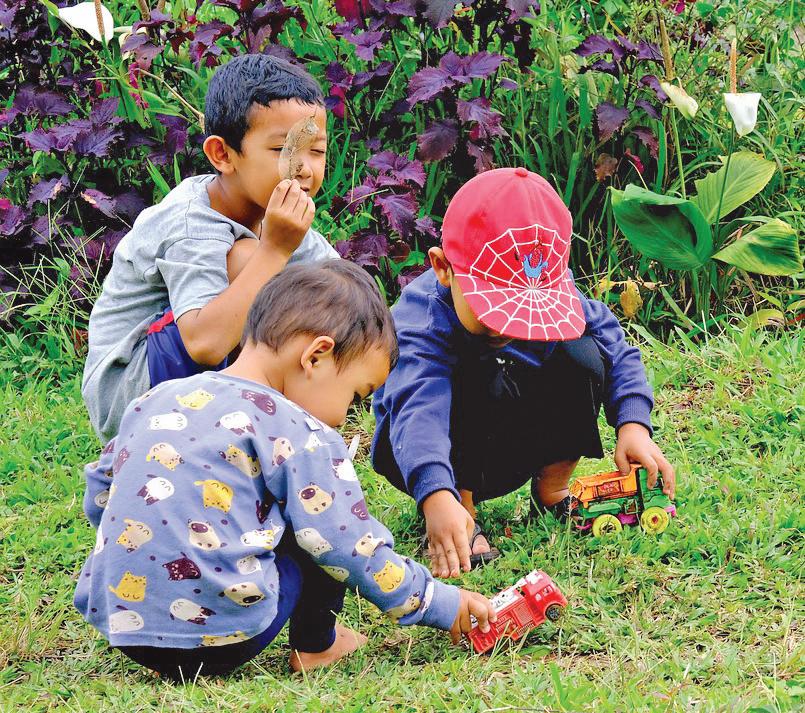
body move. This stage is followed by solitary play up to the age of 2 years old. During this stage, little ones are mastering the basics of playing with objects such as their bodies and simple toys continuing to build the awareness of mind and body connection and simple cause and effect. Once they start to find some mastery in solitary play, they move into spectating as they notice others play

too. As this curiosity continues to develop, toddlers at about the age of 2 years begin the process of parallel play, playing side by side but not necessarily with others. From 3 to 4 years old children engage in associative play, while they will play the same thing as their peer, they are not yet able to work together. One example of associative play would be playing house while one child cooks and the



other takes care of a baby. About the age of 4 to 5 years, children start to work on developing cooperative play working together to co create the experience, achieving a common goal while taking on different roles.
As parents, it’s easy to get caught up in schedules, milestones, and the hustle of daily life. But in the moments when your child is lost in play—whether they’re stacking blocks, pretending to be a superhero, or running around with friends— they’re doing something extraordinary. Through play, they’re building the skills, confidence, and creativity they’ll carry into adulthood.
So, next time you see your child at play, take a moment to appreciate the magic happening before your eyes. Encourage it, join in when you can, and know that these moments of joy and discovery are laying the groundwork for a brighter future. Play isn’t just child’s play—it’s the key to unlocking their full potential. If you have concerns about your child’s play development, please reach out to your local play therapist for support on assessing and addressing any underlying concerns.
Christina Thomason, LMSW Acacia: A Place for Personal & Family Development

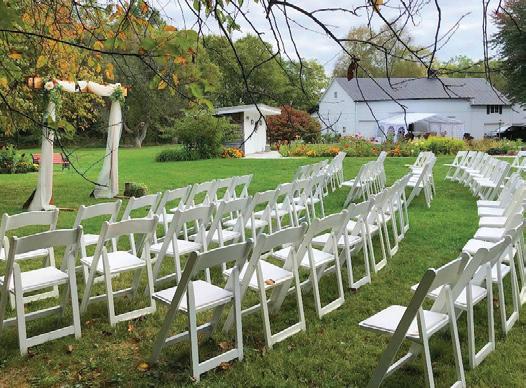



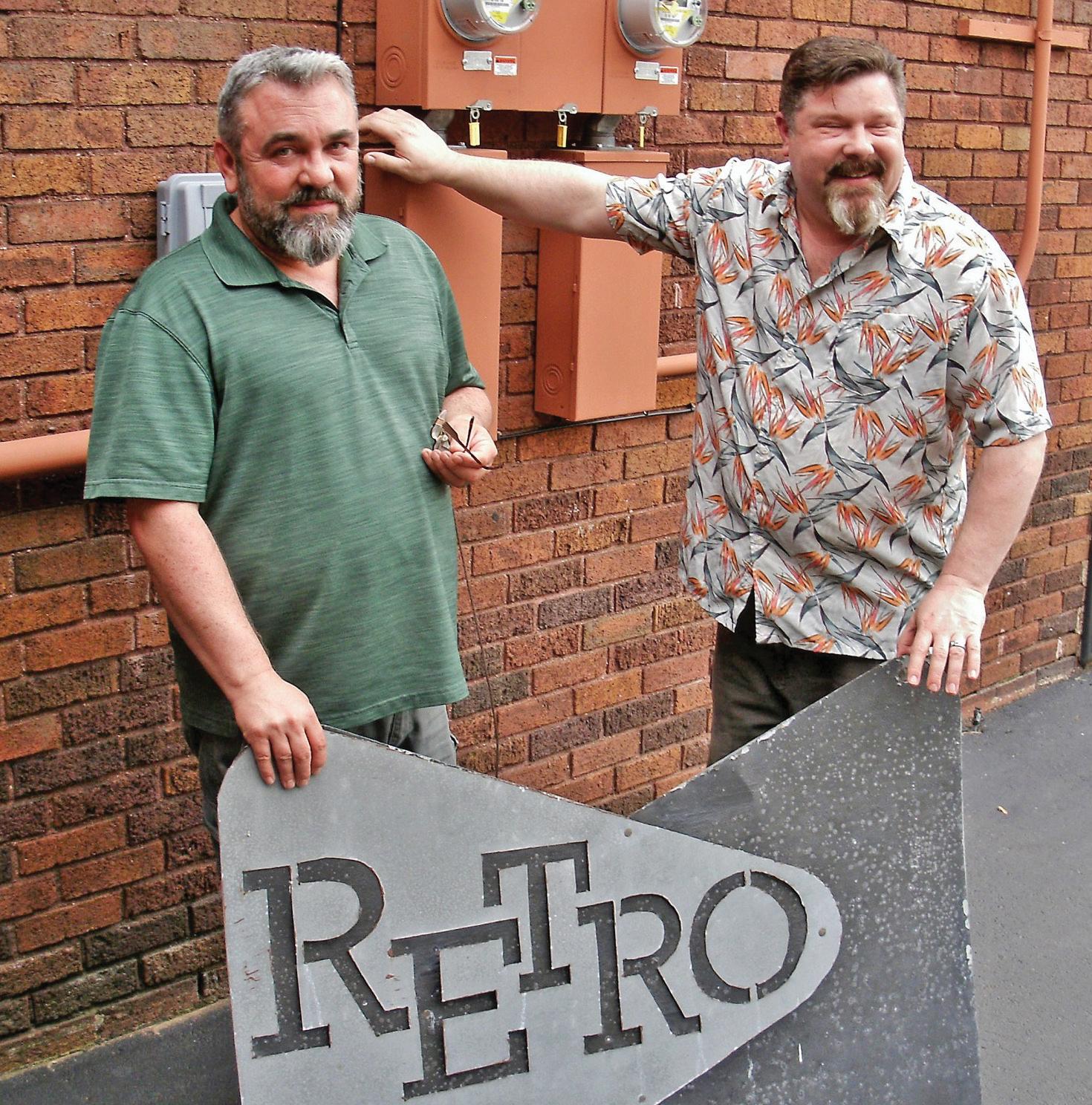
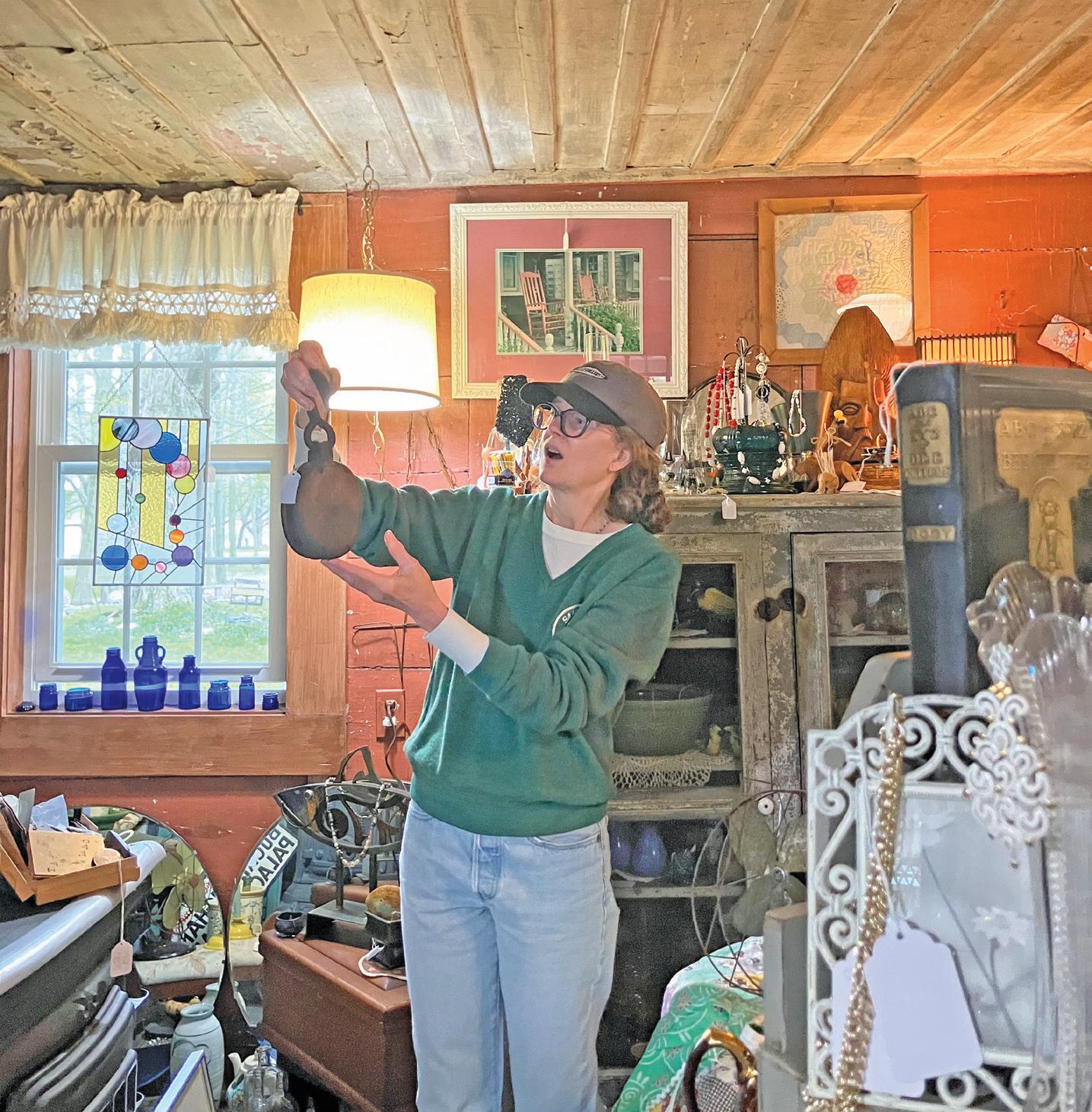
I smile as I hear the crunch of tires on the gravel in the drive I’m betting it’s my pickin’pal, Julie, arriving at Eldred Homestead for a day of junquein! Today, however, is a bit different from our other excursions. Julie enters the back door as she most ALWAYS does (After all, back door guests are ALWAYS best!), then waits expectantly. “Are you open yet?!” “No,” I replied. “I was waiting on you.” She laughs. “I like to see you flip over your sign! Kinda like an old fashioned shoppe keeper!” “Well, I guess I rather am!” I reply. You see, today, Julie and I are at MY shoppe, Mimi’s GigiMigi! Nestled in the rural Village of Climax, nearly smack dab in between Kalamazoo and Battle Creek, Mimi’s shares her residence with our B&B, Eldred Homestead. Built in 1848, the Homestead boasts a prevalent history of stories of the Underground Railroad, the Masons meeting in the Attic, and a host of distinguished ancestors. I can go on and on regarding the history - and often do! My most lovely shoppe is housed in the windmill! As I love to recite, the windmill is one of the last standing timber and beam enclosed windmills in the state of MI! Whew! It is thought that the Eldred’s most likely resided in the enclosure while the main part of the brick home was being completed. Now, it is home to my shoppe! Two levels of wondrous junque! I love primitives and rustics - the wide plank floors, ship lap siding on the walls, and board and
Family Owned with over 30



-Annual Flats -Hanging Baskets -Perennials -Herbs -Vegetables -Trees & Shrubs -Grasses -Soil -Pots -Seeds -Custom Container Pots & More!
batten ceilings serve well to show it off! Of course, glassware (ahhh! Cobalt blue!), pottery, copper and brass, crocks, do not take a back seat to hand embroidered linens, doilies, hankies, small furnishing, planters, books…you name it, I probably have it tucked in some corner! I adore to find the unusual! If I can hear a piece of a junque’s story, it’s history…it is the best!


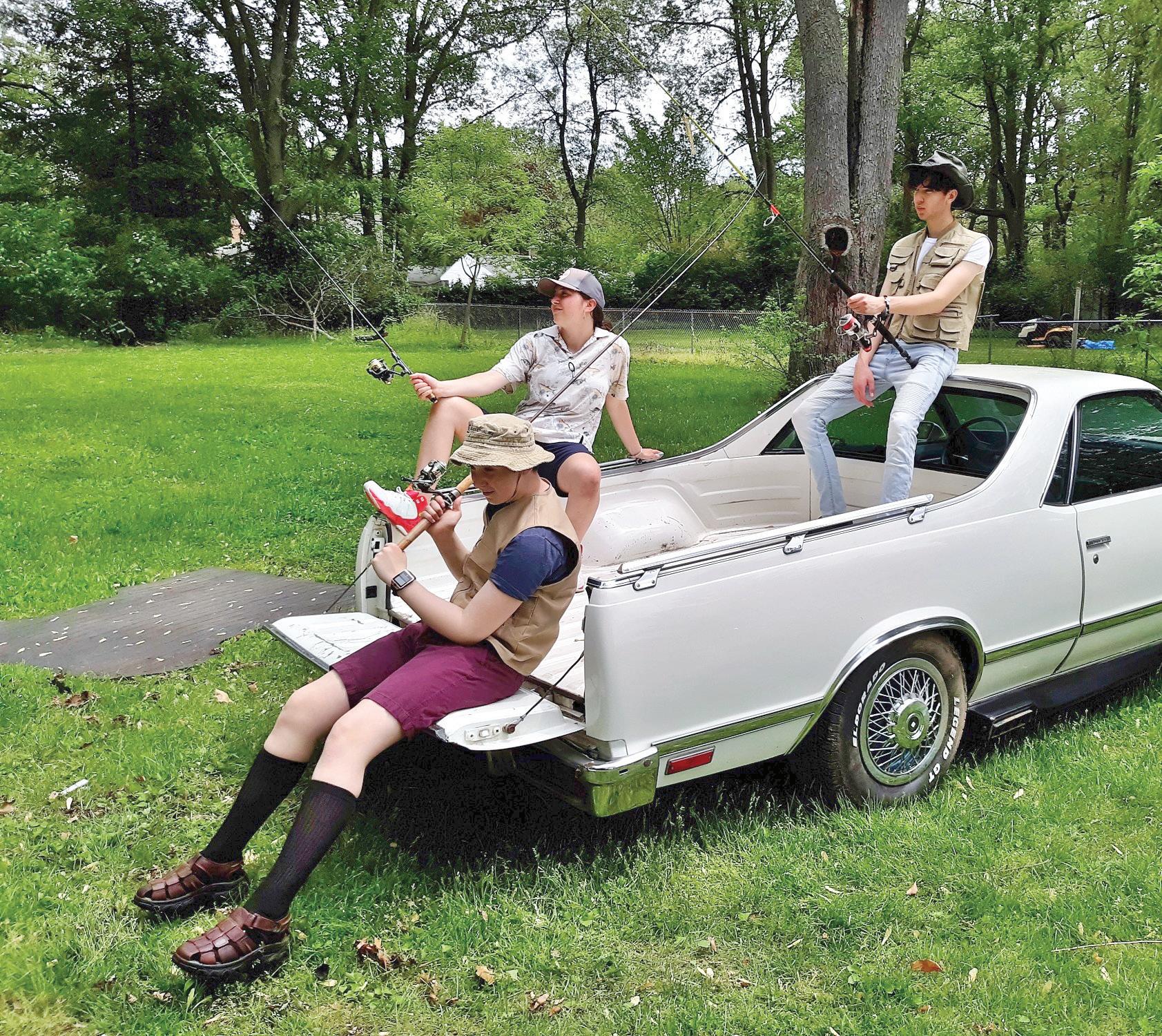
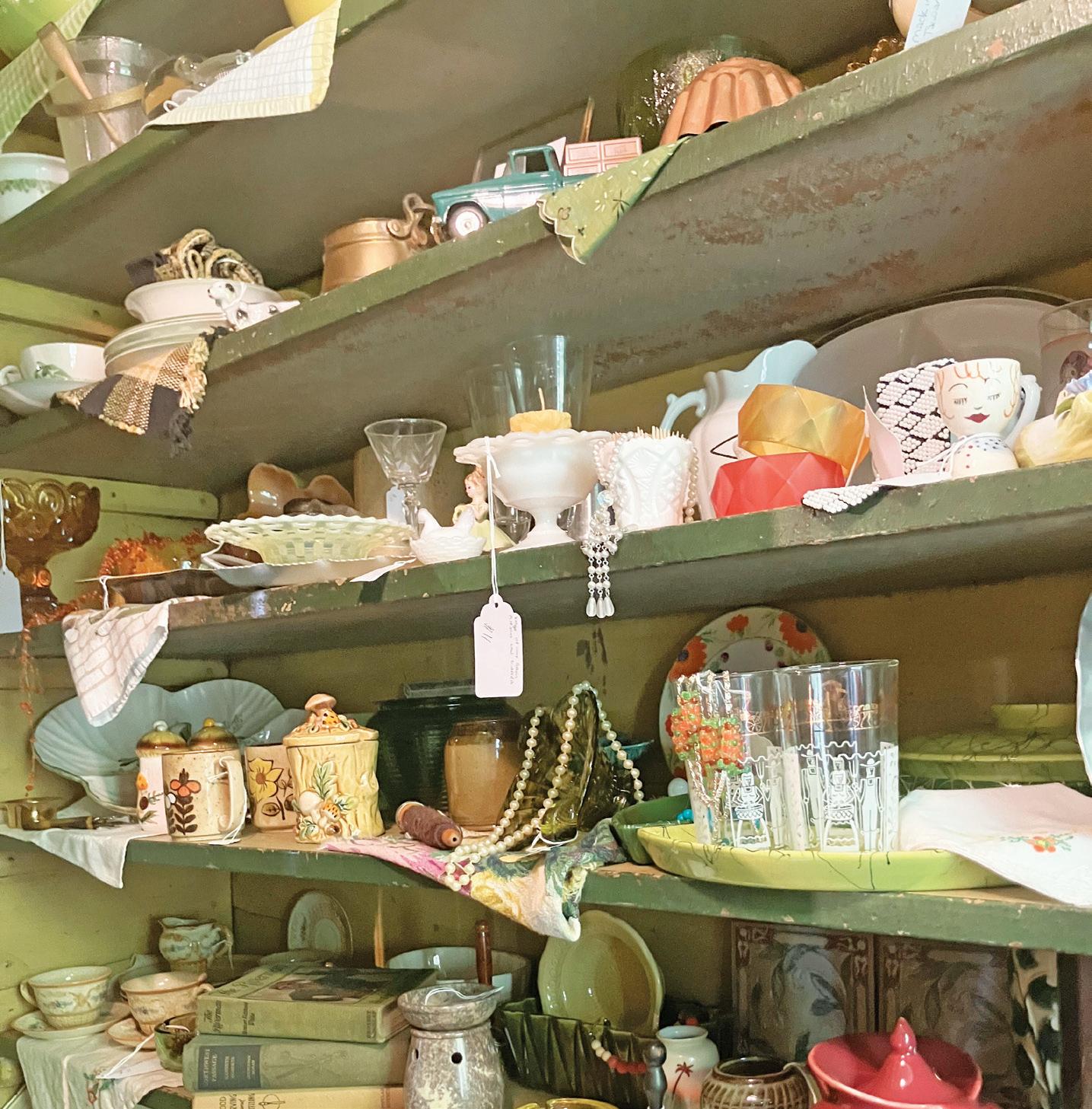
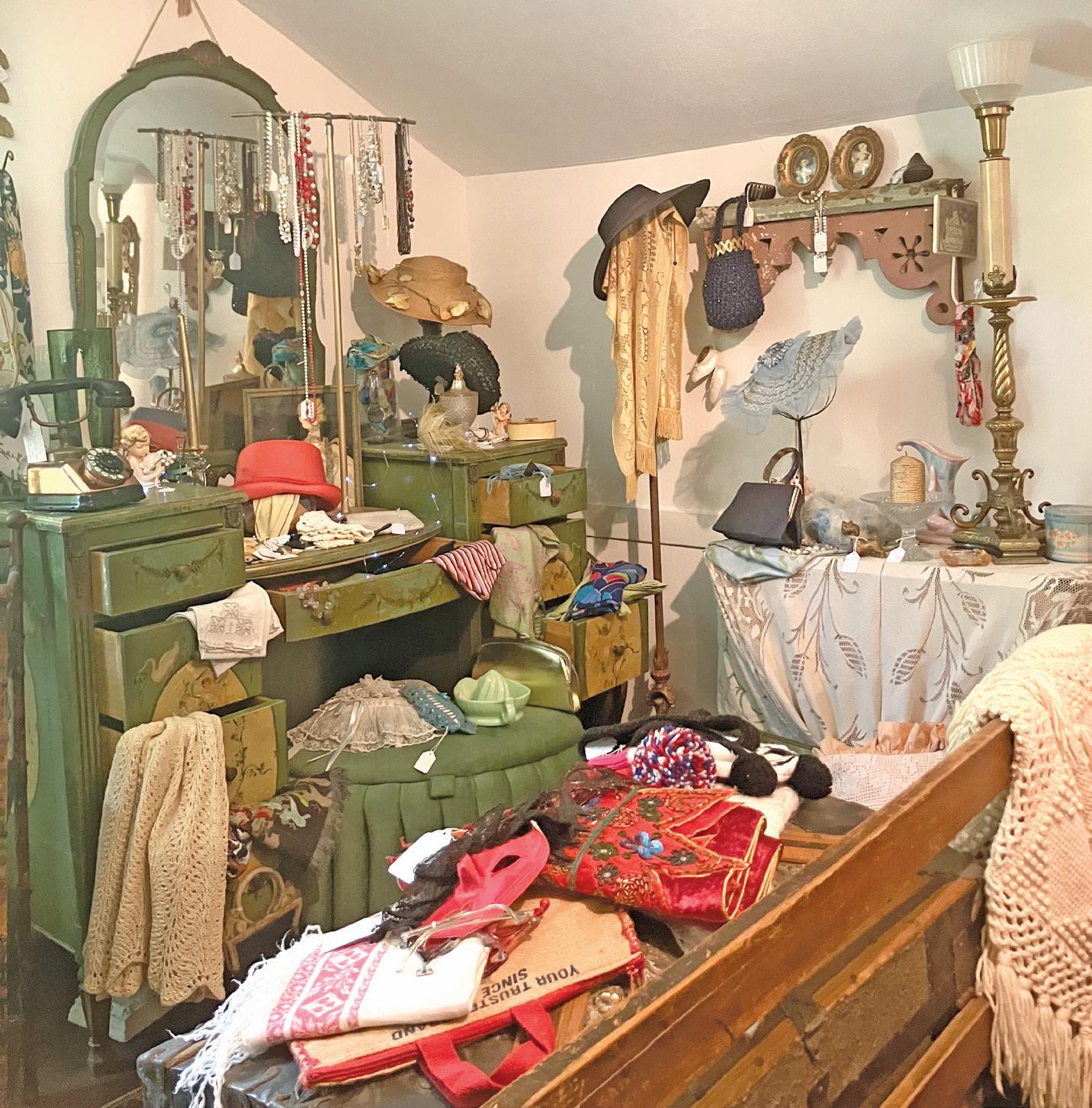
The upstairs is a haven of vintage finery - along with all one might need to go along with it! Belts, shoes, jewelry, hats, scarves… OH, MY! My original idea was to mimic a French boutique, after finding a hand-painted, ooo,la,la, vanity, but after three years, it has evolved to eclectic boho boutique! I guess that is more me! I try very hard to abide


by the standards of 25 years to be ”true” vintage. My eras cover from 2000 to Victorian! I just cannot seem to leave any era out! 1920-30’s is probably my favorite, if I must pick. Though the patterns of the 50’s just trip my trigger! I enjoy dressing my mannequins in finery, creating outfits for other’s to possibly wear about the town! A dressing room is available to try your finds - decked in Victorian Vivacious “Vun”, complete with a slanted witches window! Out East, it was believed that if a window was slanted, a witch could not fly through on her broomstick. As a homage to his native state, Thomas Eldred had the window installed. One must see to fully appreciate - even the original glass! Be sure to take a moment to ogle the ORIGINAL wallpaper on the stairwell! My dear friend, Robin, covered it with a special primer to preserve the integrity. Along with some farmhand scratching in his hours on the banister at the landing. I sit and gaze, thinking of 177 years of history on this Homestead. Voices from the past. I promise, perusing at Mimi’s shall be an experience you will not quickly forget! Come see me, hear a story, or two! A piece of history is sure to follow you home! Mimi’s GigiMigi is open TuesdayFriday 11a-4p, Sunday 12n- 4p, or by appointment. 6378 South 44th Street Climax (269)808-8183
A premier Southwest Michigan venue specializing in full weekend weddings
A premier Southwest Michigan venue specializing in full weekend weddings
Cris Bronkema Mimi’s GigiMigi
Enjoy
Enjoy beautiful ceremony sites among seasonal flower gardens and wooded backdrops, receptions in the event barn, full weekend lodging in the his toric home for the wedding party, and a secluded riverside honeymoon suite for the happy couple - all conveniently located




cover Organic Blueberries, LLC, in West Olive, MI.
Anyone who loves blueberries can’t help but get excited when Michigan blueberry season rolls around. A berry that offers a fresher flavor that is unlike the rest, many credit our Great Lakes for giving our berries this extra ‘flavor’ edge!
Heaven-sent, our great State of Michigan is blessed (literally from head to toe) with ideal growing conditions that enable these indigo-hued gems to thrive throughout our entire beautiful state- thank you God, and Mother of God!
Blueberries are truly one-of-a-kind and they provide us with one-of-akind pleasures and nutrients, which are at their peak when berries are fresh-picked, and even healthier for us when they are organically-grown. This criteria is how I came to dis-
Family owned and operated, current owner, Victoria (Vicki) Carini, explained, “We are a fourth generation, family owned and run organic blueberry farm, and it’s been while under my leadership that we have become certified organic, MAEAP certified.”
Striving to provide the best fruit and friendly atmosphere for families, Vicki smiles when she talks about the Carini farm.
“It is a wonderful place for the whole family to come out and pick to until your heart’s content, and since we do not utilize toxic pesticides, you can eat a few as you pick them, too!”
Using only organic certified sprays to keep the bugs away, Vicki indicated that a mere water rinse is all their berries need to be ready to enjoy.
“They’re safe enough to eat a few as
you pick them!”
Hubby and I took them at their word and did indulge straight from the branch when we visited them last year. “Wow, what flavor!” we both screamed. We’ve had the pleasure of feasting on what we’ve deemed to be the most flavor-forward blueberry we’ve ever eaten from afreezer. Magically retaining its fresh-picked flavor, we both highly recommend buying plenty of these economically-priced organic blueberries so you can freeze (then vacuum-pack) to enjoy yearround, too!
Passionate stewards of the land, and true believers in the power of sustainable agriculture, The Carini’s are striving to provide the best organic blueberries possible in Western Michigan.
“We invite you to come, step into our world of flourishing blueberry bushes and find yourself embraced by the
gentle breeze and warm sun. Indulge yourself in the simple pleasures of life and embark on a journey of flavors, memories, and love here at our family-owned organic blueberry farm. We look forward to seeing you this summer!”
Offering pre-picked, U-pick, and Frozen pricing tiers, for more information on the 2025 season, contact Organic Blueberries LLC of West Olive, MI at- Phone: (616) 5606560; Email: carinivictoria7@gmail. com; Website: organicblueberries. com; FB page: organicblueberriesllc. Here now are a few of my favorite ways to dive into this oh-so-blueberry season. Enjoy!
Laura Kurella is an award-winning home cook who loves to share recipes from her Michigan kitchen. She welcomes your comments at laurakurella@ yahoo.com
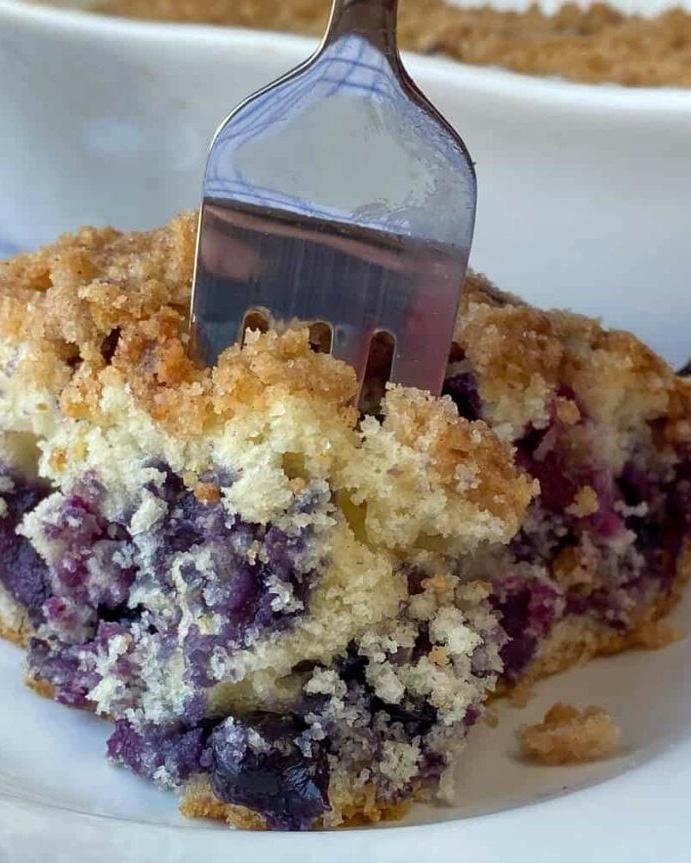
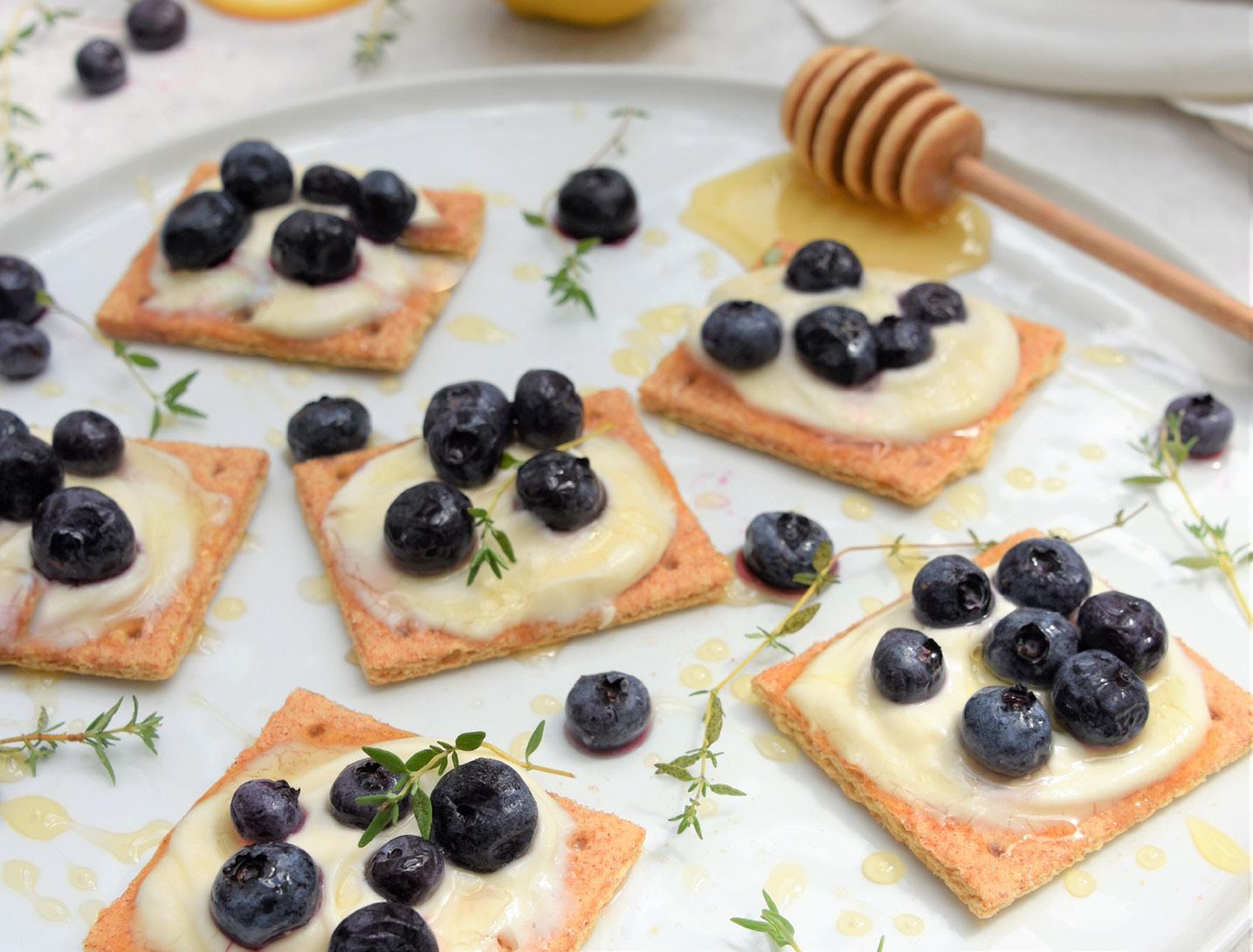
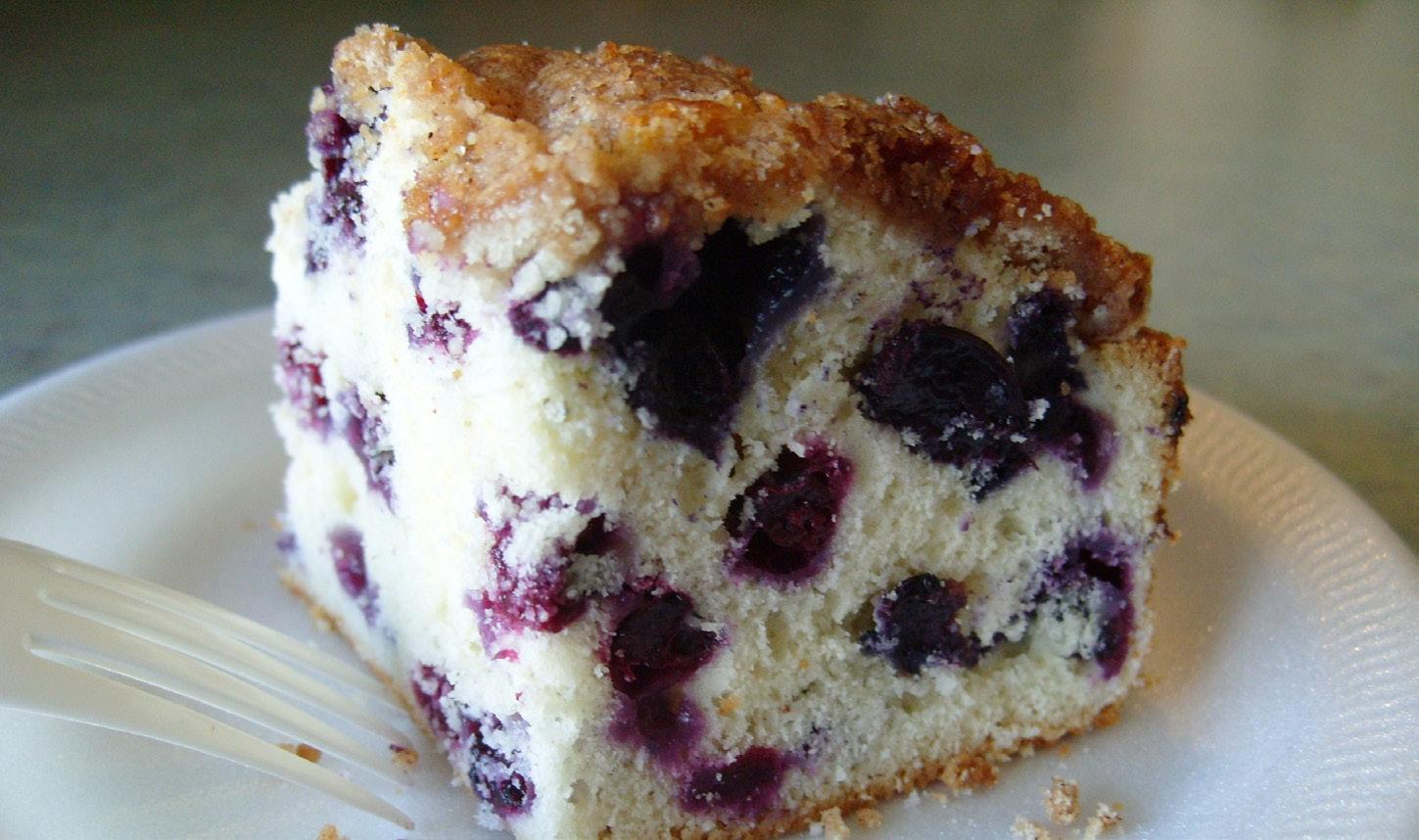
Easy, pleasing, and delicious! Slices freeze well, too!
Yield: 24 servings CAKE
2 cups all-purpose flour
2 teaspoons baking powder
1/2 teaspoon salt
1/4 cup vegetable shortening
3/4 cup sugar
1 egg
1/2 cup milk
2 cups blueberries
TOPPING
1/2 cup brown sugar
3 tablespoons all-purpose flour
1 teaspoon ground cinnamon
3 tablespoon butter
Preheat the oven to 375 degrees. Grease an 8-inch square pan. Sift together flour, baking powder and salt, set aside. In a mixer, cream together shortening and sugar until light and fluffy. Beat in egg. Beat in the flour mixture alternately with the milk, mixing just until incorporated. Fold in blueberries. Pour batter into the prepared pan. In a small bowl, combine dry topping ingredients then cut in butter until crumbly then sprinkle over batter. Bake for 45 minutes until the toothpick inserted into the center comes out clean. Allow to cool.
Yield: 4 servings
4 ounces Neufchatel or cream cheese
1/2 teaspoon pure vanilla extract splash of fresh lemon juice
1/4 cup honey, divided use
8 graham cracker squares
1 cup fresh blueberries
Using an electric mixer, whip cream cheese, vanilla extract, lemon juice, and 2 tablespoons of the honey until smooth. Top each cracker with 1 tablespoon of the cheese mixture, sprinkle blueberries over the top of the cheese, then drizzle each cracker with remaining honey.

1 cup fresh or frozen blueberries
1 tablespoon honey
1/2 cup mint leaves, torn
2 cups club soda (approximately)
2 ounces vodka (optional)
Twist of lime (optional)
Garnish (optional) fresh blueberries and mint sprigs
In the bowl of a blender, combine blueberries, honey, and mint. Blend for one minute then strain equally into two tall glasses filled with ice.

Keeping strained solids in strainer, pour club soda over/through solids from blender into glasses to help rinse the goodness into the glass, being sure to leave two inches at the top of the glass.
Top off with vodka, if using, and a twist of lime, if using, then garnish with some fresh blueberries and a sprig of mint, if desired, before serving.
Yield: 8 servings CRUST
1 1/2 cups graham cracker crumbs
3 tablespoons sugar
5 to 6 tablespoons butter, melted FILLING
1 cup fresh blueberries
1/4 cup water
3 tablespoons sugar
1 tablespoon light corn syrup
3/4 teaspoon cornstarch
1/8 teaspoon unrefined sea salt
1/2 teaspoon lemon zest
8-ounces Neufchatel cheese
3/4 cup confectioners’ sugar
1 1/2 cups heavy whipping cream
1/2 teaspoon pure vanilla extract
Preheat oven to 350 degrees. Spray a 9-inch pie pan with nonstick cooking spray.
For crust: In a large bowl, combine graham cracker crumbs and sugar. Add melted butter, stirring until moistened. Using the bottom of a measuring cup, press mixture into bottom and up sides of prepared pan.
Bake 7 minutes. Let cool completely on a wire rack.
For filling: In a small saucepan, stir together blueberries, 1/4 cup water, sugar, corn syrup, cornstarch, and salt. Bring to a boil over medium-high heat, stirring occasionally. Reduce heat to medium-low; cook until mixture begins to thicken and berries begin to burst, 4 to 5 minutes, stirring occasionally. Remove from heat; stir in zest. Transfer mixture to a small bowl, and let cool 10 minutes. Lightly cover, and refrigerate until chilled, approximately 1 hour. In a large bowl, add cream cheese and confectioners’ sugar. Beat at medium speed with an electric mixer until smooth. Add cream and vanilla; beat at high speed until stiff peaks form. Gently fold in blueberry mixture (do not stir). Spoon in prepared crust, spreading gently to edges. Lightly cover, and freeze until firm. Let stand at room temperature 20 minutes before serving.
Loneliness is a complex emotional experience that varies significantly from person to person based on individual circumstances, experiences, and social environments. While some may characterize loneliness as the absence of companionship or a significant other to share life’s moments, others may experience profound feelings of isolation even in the company of family and friends. For example, parents might grapple with loneliness as their children transition to independent phases of their lives—such as heading off to college or forming their social networks. Additionally, employees in workplace environments may feel isolated if they find themselves excluded from social interactions or discussions with colleagues.
Consider a typical morning routine: you reach for your phone, hoping for a message, only to find it devoid of any notifications. As you navigate through your day, you encounter a void characterized by the absence of meaningful conversations, instead scrolling through an endless feed of social media posts, feeling an unshakable emptiness. This stark reality reflects the experience of mil-

lions around the globe, a sentiment that has been markedly exacerbated by societal changes and the modern digital landscape.
The surge in feelings of loneliness has intensified, particularly in the aftermath of the COVID-19 pandemic, which has catalyzed a pronounced shift toward increased social isolation. Many individuals have retreated into their homes, often sacrificing opportunities for social engagement with friends, family, and peers. Loneliness is not merely an emotional setback; it has emerged as a significant public
health issue warranting serious attention. The fundamental human need for connection highlights the importance of not only having people physically present but also engaging in meaningful interactions that nourish the soul and promote well-being.
The consequences of loneliness extend deeply into both psychological and physical realms. Research indicates that individuals experiencing chronic loneliness are at a significant-
ly higher risk of developing mental health issues, including depression, anxiety, and suicidal ideation. The psychological toll associated with prolonged loneliness is profound, with empirical studies showing a correlation between loneliness and cognitive decline among older adults, affecting memory, reasoning, and overall cognitive function.
Physiologically, loneliness has been linked to various health risks. Studies reveal that lonely individuals face increased incidence rates of cardiovascular diseases, compromised immune responses, and heightened mortality rates. The prolonged sensation of loneliness can trigger stress responses within the body, leading to elevated cortisol levels—a hormone associated with numerous health complications ranging from weight gain to anxiety.
Several interconnected factors contribute to the growing prevalence of loneliness in contemporary society. One of the most significant is the rising reliance on digital communication. While technology provides the illusion of connectivity, it often exacerbates feelings of isolation. Social media platforms, designed for social interaction, can instead
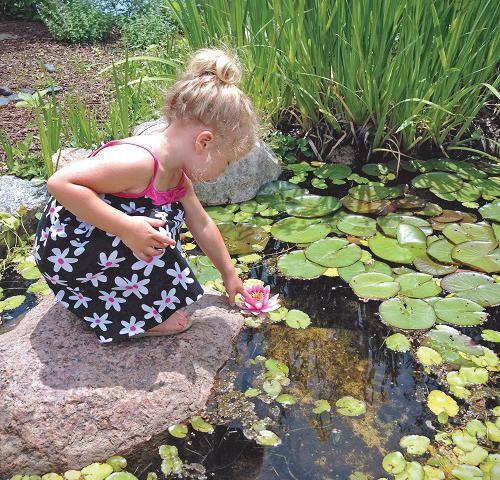




foster unrealistic comparisons, where individuals measure their own lives against curated portrayals of others. This can lead not only to feelings of inadequacy but also to a perception of exclusion, particularly when observing friends participating in social events without one’s involvement.
Moreover, the increasing prevalence of telecommuting has drastically reduced face-to-face interactions, contributing to a pervasive sense of disconnection. The remote work model, while offering flexibility, often diminishes opportunities for spontaneous social encounters and diminishes the sense of camaraderie typically found in traditional office settings.
Changes in familial structures, such as the decline in multigenerational households, have also contributed to increased isolation. Many individuals now live alone and may lack the support network that comes with larger family units. The rise of delivery services for groceries and meals further curtails opportunities for incidental social interactions that traditionally occur during shopping or communal meal preparation. Additionally, societal stigmas surrounding loneliness can prevent individuals from voicing their feelings, further entrenching the
sense of isolation as they assume they are alone in their experiences.
1. Prioritizing Real-Life Connections: Individuals are encouraged to actively seek and schedule in-person meetups with friends and family. Building and prioritizing these relationships is essential for emotional well-being.
2. Practicing Social Fitness: Just as physical fitness requires regular exercise; social fitness involves actively maintaining and strengthening friendships. Engaging in social activities, attending gatherings, and checking in regularly with loved ones can reinforce these bonds.
3. Seeking Therapy or Support Groups: Professional mental health support can be invaluable for those experiencing chronic loneliness. Therapy provides a safe space for exploring feelings, while support groups offer shared experiences and connections with others who understand the struggle.
4. Engaging in Activities that Foster Connection: Participating in community-based volunteering, group hobbies, or classes can help individuals meet new people and en-
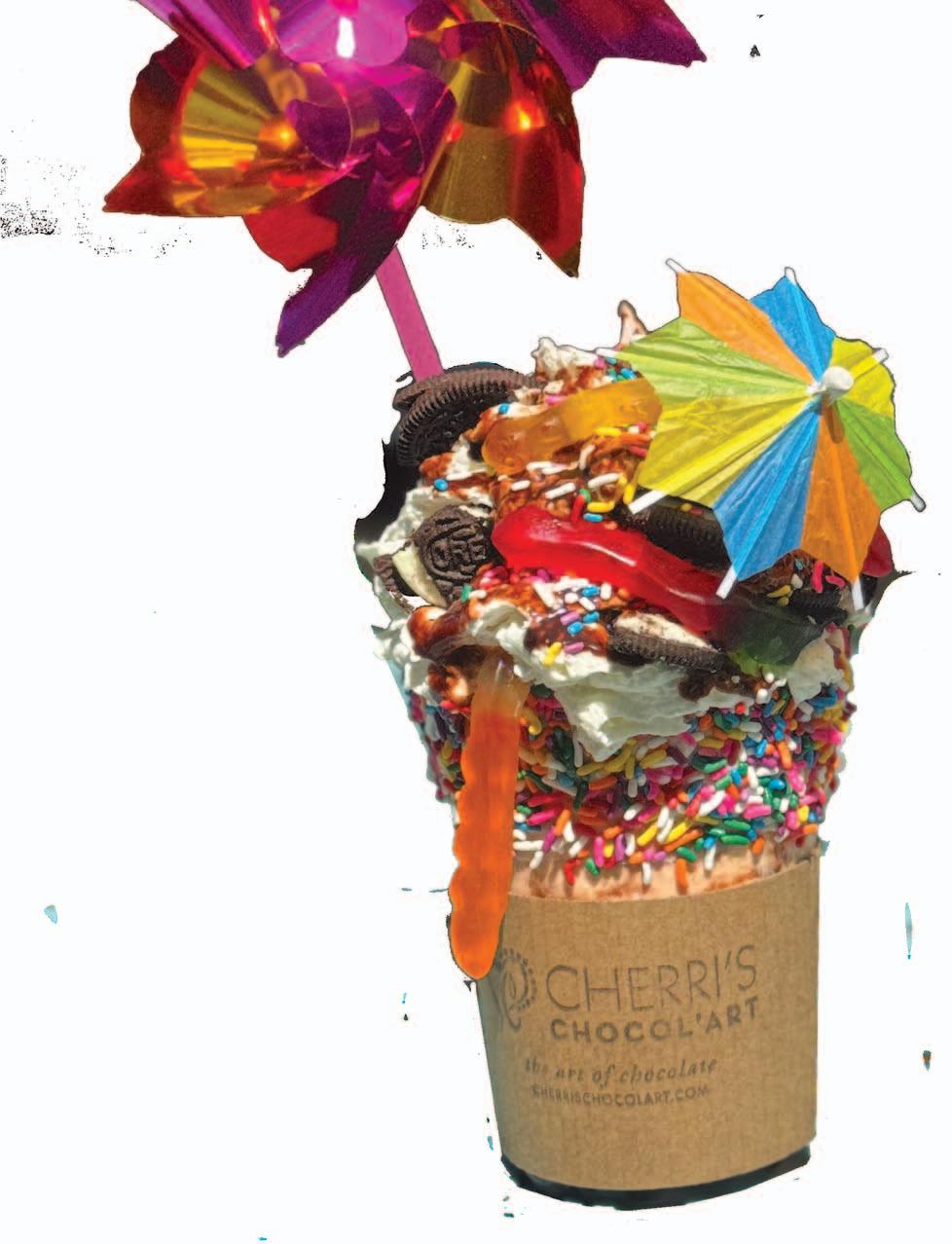



gage in fulfilling interactions centered around shared interests.
1. Creating Community Spaces: Urban planners and communities should prioritize developing inclusive public spaces—such as parks, libraries, and coworking hubs—that facilitate interaction among residents, fostering a sense of community.
2. Encouraging Workplaces to Address Loneliness: Companies should implement comprehensive programs to combat workplace loneliness, including team-building activities, mentorship programs, and accessible mental health resources that promote social engagement.
3. Incorporating Social-Emotional Learning in Schools: Educational institutions can play a pivotal role by incorporating social-emotional learning into curricula. This equips students with essential interpersonal skills, enhancing their ability to form connections throughout their lives.
4. Government Policies Promoting Social Well-Being: Policymakers can enact initiatives aimed at reducing loneliness, particularly among vulnerable populations, including the elderly. Such initiatives might include funding for mental health services,
community outreach programs, and the promotion of intergenerational activities.
Loneliness represents a critical health crisis in contemporary society, extending beyond individual experiences to encompass a collective issue that necessitates proactive engagement from both individuals and communities. By fostering meaningful connections, raising awareness about the multifaceted effects of loneliness, and implementing dedicated efforts toward social engagement, we can collaboratively address this pervasive issue. With increased awareness, support, and intentional actions, loneliness can be alleviated, paving the way for healthier, more interconnected lives. incorporate social-emotional learning to teach connection skills. Government policies that promote social well-being (e.g., combating elder loneliness, funding mental health initiatives).Loneliness is a serious health crisis, not just a personal issue. Both individuals and society to take steps toward fostering meaningful connections. Loneliness is reversible with awareness and action.
Dr. Julie Sorenson, DMFT, MA, LPC












I don’t think there’s a person out there that at some time made a decision and came to regret it later. Decisions such as these always come with consequences, some minor, others major. And then those that are permanent, and I do mean permanent.
Body art has been a relatively recent phenomenon. Years ago, tattoos were a rite of initiation with men serving in the military. They were done on a forearm, some skillfully, others not, and featured declarations of forever love.
The last 20 years has seen an explosion of tattoos on both genders, especially athletes. There’s a woman who holds the Guiness Book of World Records by having 99.3% of her body tattooed, including eyelids and tongue! I’ve also seen them on mature men and women. In fact over 30% of adults now have at least one tattoo. Over half of those say it was a mistake. Getting rid of it is not easy.
A tattoo is meant to be permanent. Ink in placed beneath the surface of your skin, in the second layer called the dermis. That is why the tattoo doesn’t fade with the normal shedding of skin cells. It’s also why it’s more complicated to remove.

If you really don’t want the tattoo anymore, the first visit is to a dermatologist who can determine whether you’re a good candidate for a tattoo removal. The size and color of the tattoo as well as your skin color all affect the outcome. The skin care professional also can help you understand what’s involved and what to expect. This can include possible side effects such as scarring or discoloration of the skin
A common way to remove or


lighten a tattoo is through laser treatment, using Q-switched lasers. These emit a pulse energy that breaks up the tattoo ink into tiny pieces. Over several weeks, your body’s immune system eliminates the ink particles. Is this process painful? Yes. Those who have experienced the process describe it as being similar to snapping a rubber band against the skin. After the treatment, the area around the tattoo may be swollen and your skin may blister or bleed.
Often, it’s not possible to remove all evidence of a tattoo. But after repeated sessions, the tattoo may fade to a level you’re happy with. Another solution might be covering the remaining tattoo with a different tattoo.
With a multicolored tattoo, you may need treatment with multiple lasers. That’s because different colors absorb different energy wavelengths. Dark blue and black are easier to remove, while green, red, and yellow are more difficult. And don’t forget, people have allergic reactions to different colored inks, making removal necessary, not merely cosmetic.
As for at-home removal kits you have seen advertised, these are not approved by the Food and Drug Administration. They haven’t proved to be effective and sometimes may be harmful.
I hope this finds you well. Remember to be kind and Make Your Day Great!
Till next time,
Ken Dettloff ACE Certified Personal and Brain Health Trainer


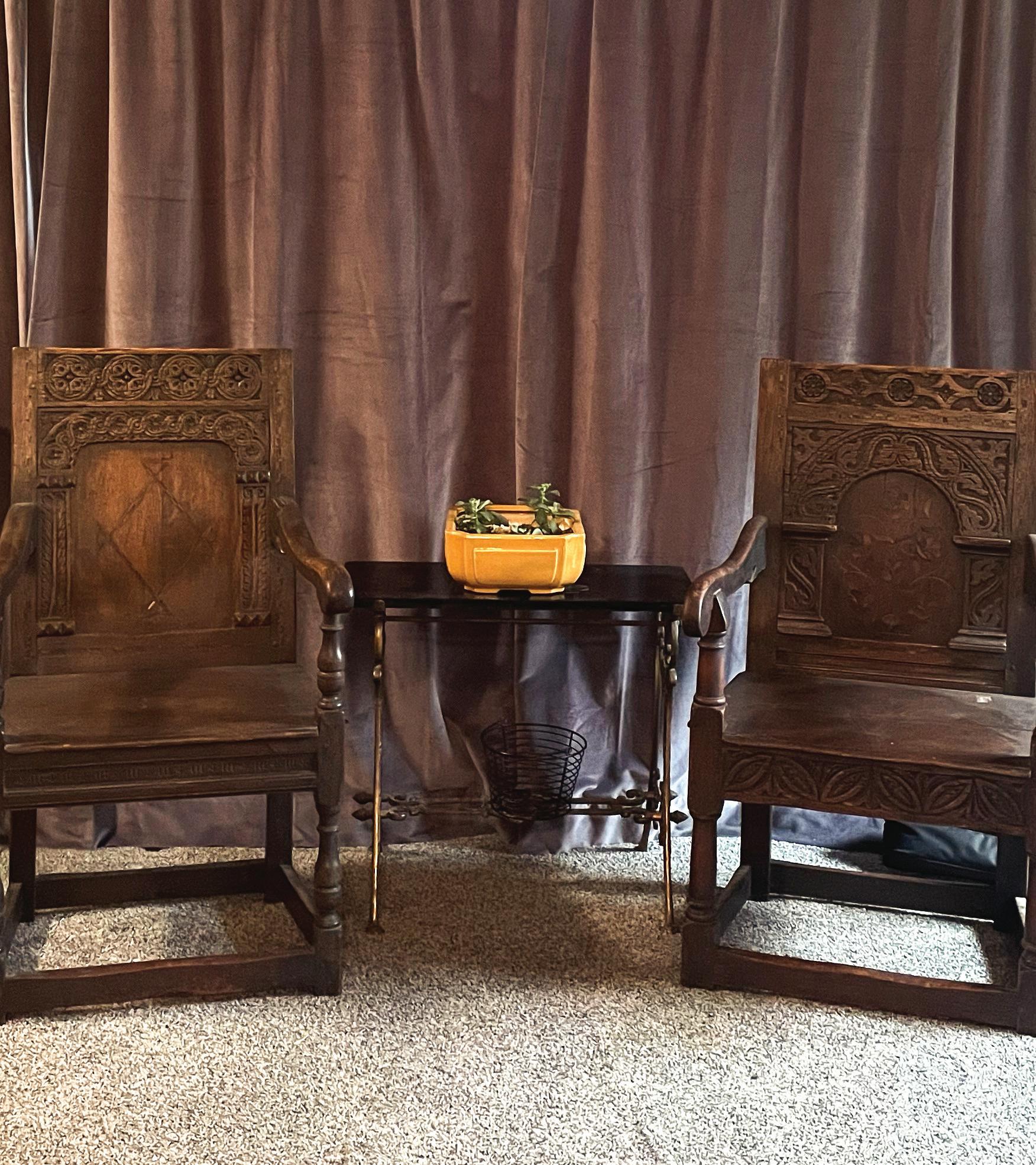
In the late 1800s, a series of events unfolded, which led to a unique collection of British antiques, historical documents, and a mystery ending up in Michigan…
My great-grandmother, Dessa Hagee Roche, the daughter of one of General Sherman’s “Boys in Blue,” traveled from Texas to Colorado by wagon train as a young girl. Shortly after settling in Denver, the entire
family was stricken with measles. Dessa lost all of her siblings within a few weeks. Two years later, Grandma and Grandpa Hagee welcomed another daughter, Gladys. Aunt Gladys arrived early with underdeveloped lungs. Grandpa Hagee crafted a homemade incubator using parts from the bread warmer on the wood stove to keep her alive.
Aunt Gladys went on to attend the
JUNE 19, 2025
Free Admission to Kalamazoo Area Parks
Comstock Township Parks: Robert Morris Park
Kalamazoo County Parks: Arthur & Mildred Woollam Nature Preserve, Cold Brook, Markin Glen, Prairie View, River Oaks, & Scotts Mill
Portage Parks & Recreation: Ramona Park



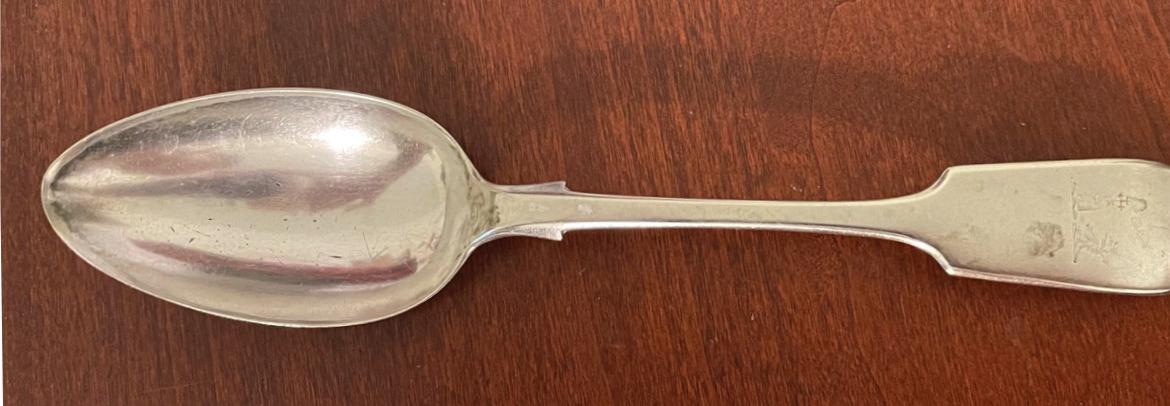
University of Colorado where she fell in love with Steere de Montfort Mathew, the only child of the second son of a second son of a British gentleman (Second sons often pursued military commissions, vicarage appointments, or in the case of Steere’s father, followed the “lure of the west” and moved to Colorado). They married in NOLA and honeymooned in Europe, settling in New York City where Aunt Gladys performed opera, and Uncle Steere became a pioneer in NBC radio. We used to play with an old xylophone from the studio that chimed the familiar “N-B-C” sound you still hear on TV today.
Uncle Steere also inherited several estates from distant relatives in England, likely due to the loss of a generation of young men in the Great War. After reviewing some of the historical documents, I traced Steere’s lineage to General Edward Mathew (1729-1805). His daughter, Anna, married James Austen, the oldest brother of author, Jane Austen. Historians also think that Austen based one of her characters on General Mathew (No, definitely not Mr. Darcy).
Never having any children, part of Gladys and Steere’s estate was bequeathed to their great-nephew, my father. In the summer of 1981, my mother, siblings, and I spent two weeks in Manhattan, living in their Upper West Side brownstone, packing up the antiques and historical documents and having many adventures in Central Park. Mom spent the rest of her life preserving the collection. We enjoyed many magical afternoons as kids playing among those items at Broadlawn (my childhood home in Hillsdale, MI): Holding court in 500 year old Tudor chairs, fencing with antique foils, and granting knighthood with Lt. Colonel Henry Mathew’s cavalry sword till my mother frantically rushed out and demonstrated the sharp edge.
Much of the collection has been
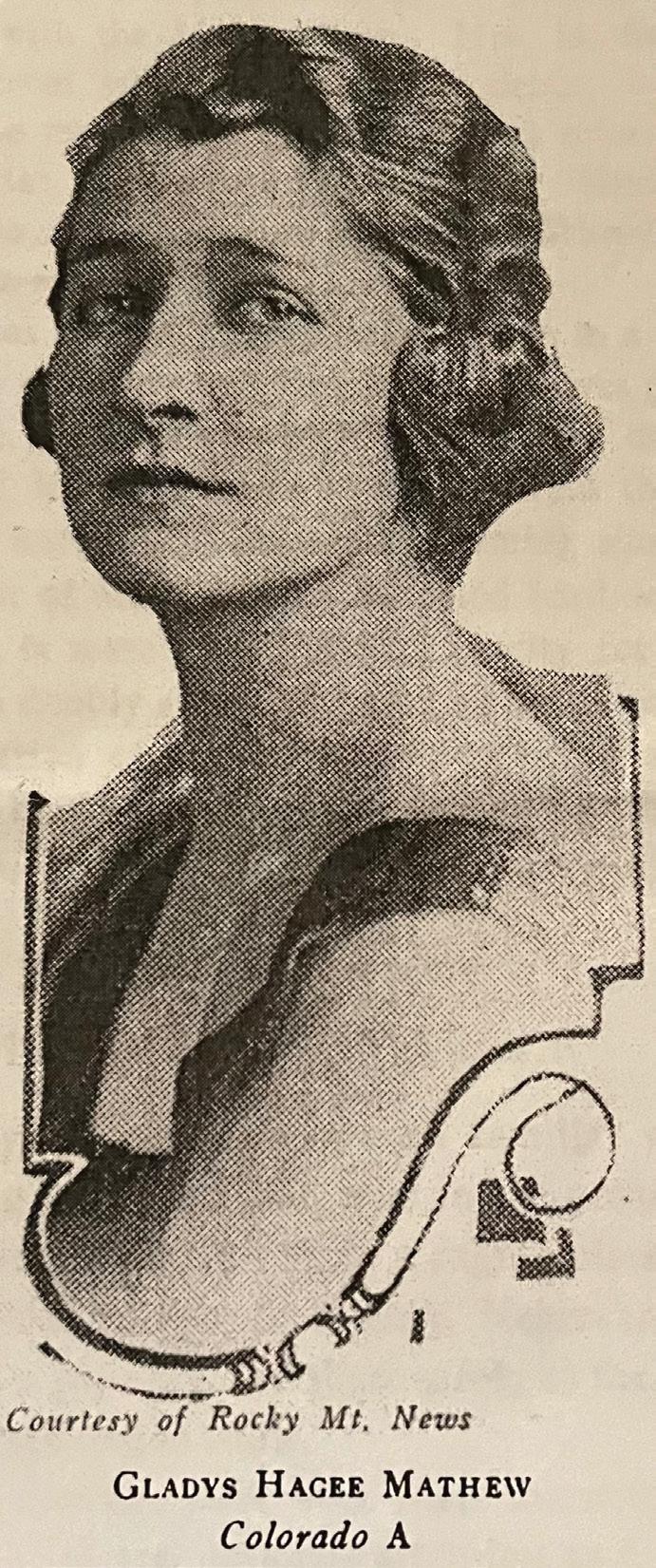
dispersed over the years, most to members of the community, young couples furnishing their first home, donations to charity auctions, etc. I’ve been slowly researching some of the items that ended up on our farm, including a vintage roll of purple ribbon from a company that went out of business in the 1930s and an old silver spoon with unique markings. At first glance, the markings look like something out of a Dan Brown novel! The spoon’s origin continues to elude me. Perhaps one day, I’ll solve this mystery.
Written by Maggie Murphy
Photos from the collection and a recent update to the historical findings can be found at www.cairnhillfarms.net (See “Monthly Musings”).


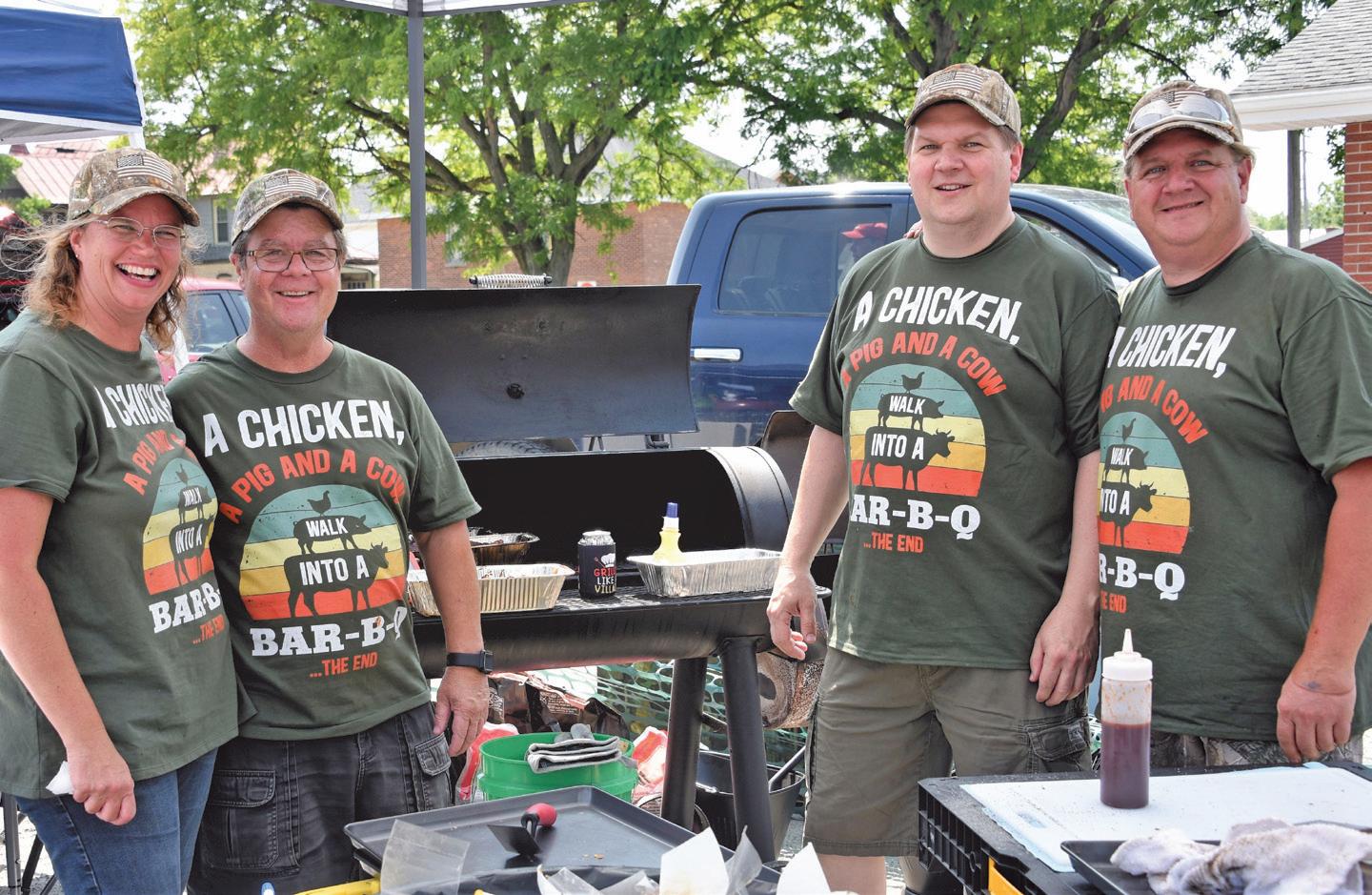
The Magic City Grill Fest is returning on June 21, 2025 to downtown Colon, MI for its sixth year!
With a new event organizer, George Collins taking the reins, this local charity event, held for the benefit of the local American Legion, is thrilled to be returning for its sixth year.
“The Magic City Grill Fest is an awesome festival for both those who love to grill and those who love to eat barbecue,” chuckled Collins. “It’s shaping up to offer all kinds of flavor through various barbecue techniques being utilized, such as charcoal briquettes, lump charcoal, and even hardwood over an open flame.” Collins noted that grilling competitors will work in teams of 4 or less and utilize various styles of grills and smokers of their own choosing, including classic Weber Grills, kamado-style grills like the Big Green Egg or Kamado Joe, barrel smokers. “There will even be those who prefer to cook over a hardwood open flame!”
With various barbecuing techniques being on display, Collins remarked that this competition is promising to offer flavors as varied as the meats they have slated to be prepared.
“This year the teams will be competing in three categories: Pork Ribs, Chicken Wings, and Beef Sliders.”
Teams of no more than four cooks will compete in each of the rounds, and for a small entry fee, ‘Tasters’ (ticketed spectators) get to enjoy samples from every team and every round in the day’s competitions.
“Anyone who buys a ticket to this delicious event will feel like a ‘winner’ too!”
Entries will be reviewed by a panel of esteemed culinary judges (that will include Good News Food Columnist, Laura Kurella), and the highest scoring entries will win prizes, trophies, and bragging rights for the year.
“Entries will undergo the standard BBQ judging system, which is based on the criteria of appearance, taste, and tenderness, with a significant weight on taste, often around 57% of the overall score.”
Collins is thrilled to be taking the reigns of this popular community fest that is celebrating its 6th year.
“This fest is drawing more and more interest every year, and is fast-becoming a haven for those who appreciate the art of superior high-quality barbecue. It’s a great event for anyone who likes to sample great barbecue, and get up-close to those grilling in a competition, and experience all levels of grilling. It really is an extraordinary culinary festival because in addition to food sampling, attendees get
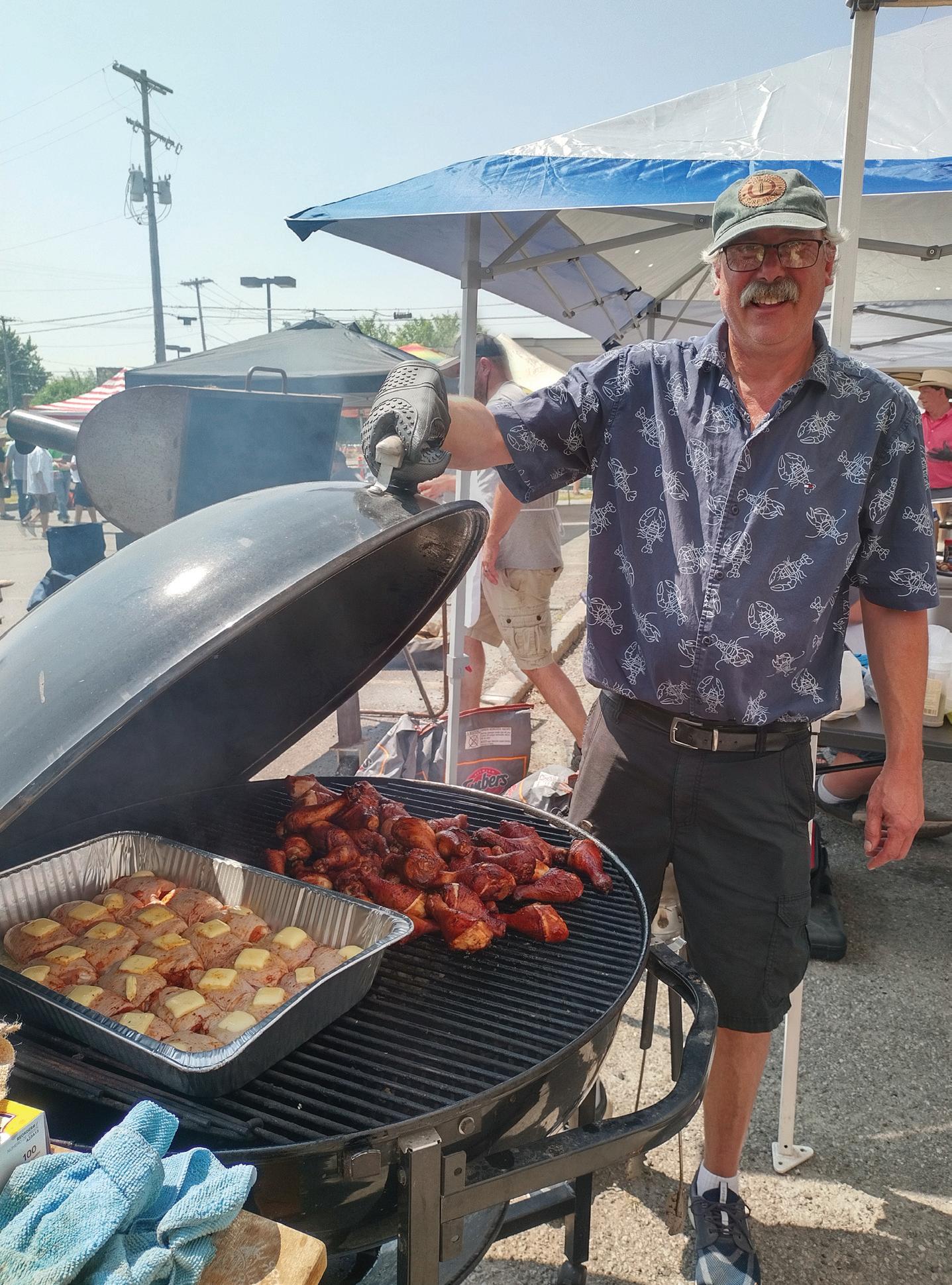
opportunities to speak directly with competitors and fellow grill enthusiasts. Exchanging secrets, discovering new grilling techniques, and gathering tips to help elevate your own backyard barbecuing you do at home. It’s quite the feast!”
Promising a day of fun, friendship, and food your taste buds won’t soon forget, this “adult-geared” fest includes a cooling, tent-covered beer garden that offers an abundance of adult beverage selections. There will also be music, a corn hole tournament, specialty vendors, and a special raffle with awesome prizes all to
benefit the local American Legion, which also serves as host for the fests ‘after’ party.
Don’t miss out on this sizzling opportunity! Mark your calendars for Saturday, June 21, 2025.
Gates open to the public at 11:00 AM in the OMNI Community Credit Union Parking Lot.
For a full list of details, to sign up your grilling team, a corn hole team, and purchase Tasting tickets, which are $15 pre-event and $20 at the gate, visit magiccitygrillfest.com.
Laura Kurella




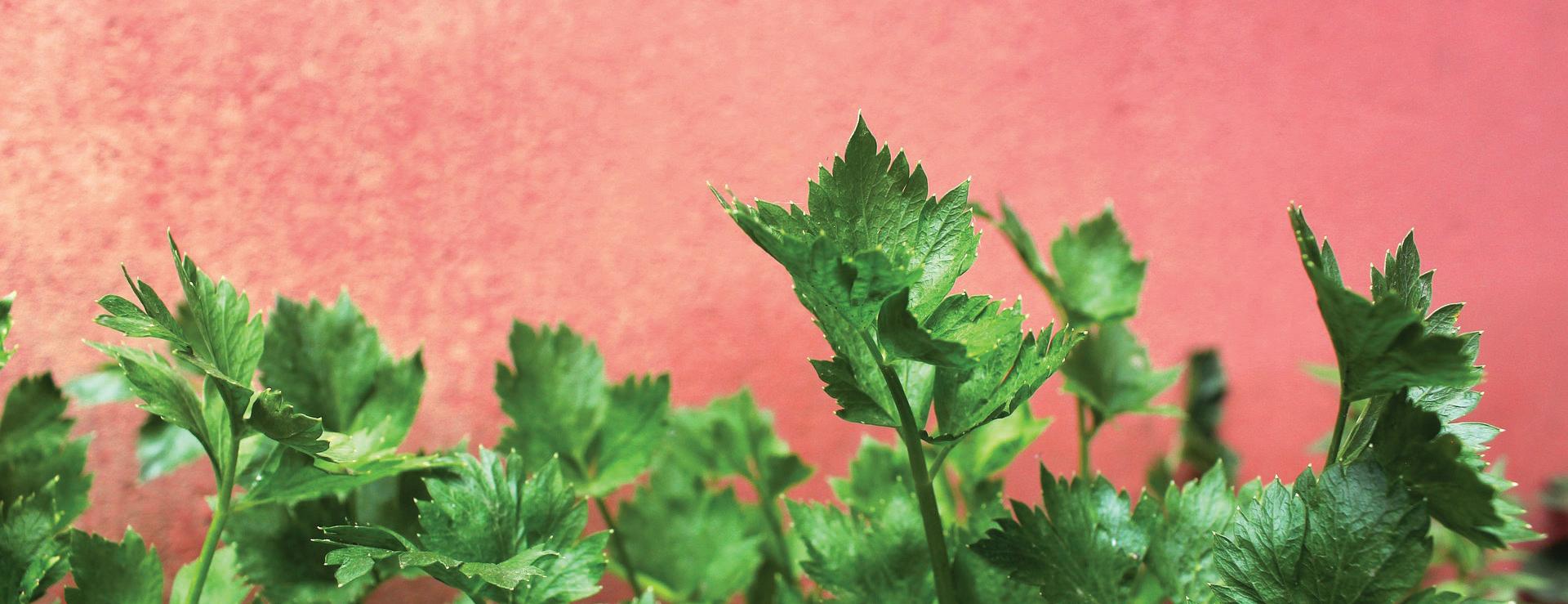
Decades ago, when my family was relocating to the area, like many new transplants, we were given the obligatory “Welcome to Kalamazoo” magazine. It didn’t take much reading to come across the interesting fact that one of the nicknames for Kalamazoo was “celery city.” Who knew? Isn’t celery from California, like many other agricultural products? But Kalamazoo? Why in the world? So many questions…
So here I am, decades later, pondering the idea of celery farms. Like many folks, I have a long history with celery. I grew up on potato salad, turkey stuffing, and Campbell’s cream of celery soup in casseroles. As a kid, my mom would even stuff ribs of celery with peanut butter and put them on the holiday table as if they were some kind of special treat! Anyone who has ever dieted has heard that the vegetable has a negative calorie value – that it takes more energy to chew and digest it than it contains. Great idea! With that logic, if I ate enough celery, I could have as many cookies as I want. Unfortunately, according to healthline.com, it isn’t true.
In a nutshell, with apologies to local historians who are much better versed in the facts, Dutch settlers originally came to southwest Michigan for the same reasons that many with others of European heritage did – for a better life economically. They got here early, did a lot of fur trading, and established a tight-knit community, both spiritually and economically. But the Dutch also had acquired skills in the “old country” that can help explain the connection with celery.
The Netherlands is notable for its geography. Much of its land is below sea level. As you can imagine, that presents a problem for a country that borders the North Sea. Even its name means “low country.” To manage the water level, the Dutch perfected a system of canals and dikes that mostly hold back the inevitable flooding that would otherwise occur. Like me, you may vaguely remember the story of Hans Brinker and the silver skates and the finger in the hole in the dike that saved the town from disaster. Where does Kalamazoo fit into this narrative? The short answer is muck. The geography and geology of southwest Michigan allow us to share common features with the Netherlands with respect to our soils. Roughly 14,000 years ago, the Great Lakes were formed when glaciers over what is now North America

receded and left not only the huge basins that became the big lakes, but also a vast number of smaller lakes and valleys, many of which are loosely connected by rivers and streams. In the long slow process of retreat, the bedrock was pulverized, over and over again, into sand and particles of rock even smaller in size, called silt. As the landscape was re-habited with life, decayed material, called humus (as opposed to hummus), was mixed in with the sandy-silty particles to produce a particularly fertile soil profile called loam. Loamy soil is perfect bed material for many plant species. It holds water, but not too much. It drains water, but again, not too much. The particles of sand and silt from the bedrock are resistant to chemical reactions, providing a buffering capacity that makes the soil resilient and not subject to acid-base concerns. The humus provides nutrients. We couldn’t ask for a better soil type.
Kalamazoo and the Netherlands have similarities with respect to surface water, although on vastly different scales. It doesn’t take long, as a resident, to find out about the almost yearly spring flooding that occurs on the Kalamazoo River. Flooding brings nutrients in soil from upland regions of the river basin down into the floodplain, recharging not only the water, but also its fertile soil. (The flooding also carries industrial pollutants, but that’s another story…) Instead of canals and dikes, seasonal water movement in the Kalamazoo River basin was controlled by dams, built at the behest of local industries, most notably the paper mills that dotted the river and its tributaries. The buildup of runoff nutrients combine with the loamy soil to produce an extremely rich, moist soil we call muck. Imagine your feet sinking down in some of our local lakes that have built up bottom sediments. That squishy material, while kind of “icky” to wade around in, is actually magical plant growing material. In the Netherlands, farmers used this rich soil,
mixed with sand to improve drainage, to grow tulips. The Dutch in Kalamazoo County and its surroundings, used it to grow first celery and later, continuing to our present time, bedding plants. Hooray for muck! Celery, in its own right, is an interesting plant. It has tiny little seeds that have a pungent taste. I’ve read that home-grown celery has quite a bit stronger flavor than what we typically are able to purchase in the grocery store. It did well in our thencooler summers, requiring lots of rain, so there was little need for irrigation during its pre-climate change heyday. Instead of the green Pascal celery we are used to, Kalamazoo celery was prized for its white or yellow color. It was blanched, a gardening/agricultural practice that restricts parts of the plant from exposure to sunlight. Blanching involves tying the ribs of the celery stalk together and using paper or wood sheets to block the stalk, but not the photosynthesizing leaves, from the sun. This is a different practice than the blanching technique we use in cooking, where we plunge a vegetable into boiling water briefly then place it into ice water to arrest growth hormones and retard enzyme action that would lead to spoilage or unwanted harsh flavors that develop during the cultivation process. Sun-blanching celery is said to promote a “sweetness” in the vegetable and eliminate bitterness. I’ve tasted that bitterness in the greenest (most photosynthesized) ribs on a stalk of celery, although I’ve never had the same experience when I’ve eaten the most tender, innermost ribs, deep inside the stalk.
Kalamazoo celery farming, back in the day, was labor intensive work. Many of the farms were run by families that employed every member in its daily operation. Siblings, wives, and even children pitched in to help with the early sowing of seed indoors then transplanting of the young crop into the fields. Before harvest every hand was on deck to carry out the
blanching and eventually the harvest of the stalks and preparation for marketing. I have a friend who has vivid memories of working each summer at her grandmother’s celery farm in Comstock along with her four strapping brothers!
As with so many agricultural crops, eventually the small farms were outcompeted by larger operations in the California valley. Although the soil wasn’t naturally as rich, and water not nearly as abundant, California had the benefit of a longer, less harsh growing season, fertilization, and access to unlimited water for irrigation (at that time) in the mid-20th Century. Immigrant farm labor was cheap and plentiful in California.
Kalamazoo farm families increasingly sold their holdings and turned to industry for their livelihood. Not to worry, though. Pivoting to bedding plants, those farms that survived joined forces to found a cooperative that is so powerful today that our region provides 75% of all bedding plants grown in the U.S. (according to KalamazooMi.com). And that, my friends, is a lot of petunias!
I now know so much more about celery, not only its social history here in Kzoo, but also its mucky plant attributes. It’s been used as a tonic, is a great source of Vitamin K and folic acid, and supposedly is good for elevating the mood, as well as stimulating for romantic passion. Clearly not just for soups and stews. I think I’ll have some now!
Cheryl Hach
Retired Science Teacher
Kalamazoo Area Math and Science Center
References:
Peppel, F. (2024, December 18). Stalking the celery city. Retrieved May 7, 2025, from https://www.kpl. gov/local-history/kalamazoo-history/ business/stalking-the-celery-city/ Crum, J., & Collins, H. (n.d.). KBS Soils - Kalamazoo Series. Kellogg Biological Station - Long Term Ecological Research. Retrieved May 8, 2025, from https://lter.kbs.msu. edu/research/site-description-andmaps/soil-description/ Katerberg, W. (2020, June 12). Muck Farms and Dutch Immigrants. Origins Online. Retrieved May 8, 2025, from https://origins.calvin. edu/2020/06/12/muck-farms-anddutch-immigrants/
Through August 31
Exhibits Collorful Collections & The Art of Advertising Kalamazoo Valley Museum
Starting June 1
Library Hop Passport Pick-up, Explore other S.W. Michigan Libraries, Vicksburg Library
Sundays, June 1,8,15,22,29 Portage Farmer’s Market 9am-1pm, Portage City Hall
Monday, June 2
Historical Richland Scavenger Hunt kit pick-up starts today, Richland Library
Mondays, June 2,9,16,23,30
Parchment Update Interviews Parchmentlibrary.org
Mondays, June 2
Family Storytime, 10-10:45am Books, songs. Vicksburg Library
Tuesdays, June 3,10,17,24
LEGO Challenge – All ages, Richland Library
Tuesdays, June 3,10,17 Portage Garden Club Weekly Plant Sale, 9am-1pm, 2732 Kalarama Ave., Portage
Tuesdays, June 3,10,17,24
Preschool Story Time, ages 3-5, 10:15, Richland Library
Tuesdays, June 3,10,17,24 Drop in Gaming, 3-5pm Richland Library
Tuesdays, June 3,10,17,24
Trivia @ 468 Wine, 6:30-8:30, 8842 Portage Rd., Portage
Tuesdays, June 3,10,17,24 Trivia Night, 7-9pm Louie’s Trophy House
Wednesdays, June 4,11,18,25
Paint a Book Brick, 10am-2pm Richland Library
Wednesdays, June 4,11,18,25
Wednesday Wigglers, 10:15am (Infant-Toddler) Richland Library
Wednesdays, June 4,11,18,25 Teen Dungeons & Dragons, 3-5pm, Register ahead 629-9085, Richland Library
Wednesdays, June 4,11,18,25 Richland Farmers Market, 3-6, @ Richland Community Center
Wednesdays, June 4
Richland Library at Richland Farmers Market, 3-6pm Summer Reading Info
Wednesdays, June 4,11,18,25
Trivia at the Taproom, 7-9pm, Apoptosis Brewing Co., Kal.
Thursdays, June 5,12,19,26
Allegan Farmers Market, 8am2pm, Corner of Water & Cutler St.
Thursdays, June 5,12,19,26
Free Thursdays, 11am-8pm, Kalamazoo Institute of Arts
Thursdays, June 5,12,19,26 Plainwell Farmers Market 3-6:30pm, 200 Allegan St.
Thursdays, June 5,12,19,26
Teen Dungeons & Dragons
4:30-6:30pm, register ahead 629-9085, Richland Library
Thursdays, June 5,12,19,26
Art in the Evening, 5-7pm drop-in, Richland Library
Thursday, June 5
Wine & Euchre, 6-8pm, Sign up ahead, 468 Wine, Portage
Thursday, June 5
Family Night, 5:30-8pm Kalamazoo Institute of Arts
Thursday, June 5
Donald Lystra author of Searching for Van Gogh, 6pm, Vicksburg Library
Thursdays, June 5,12,19,26
Triple Threat Trivia, 6:30pm Presidential Brewing Co.
Thursday, June 5
Summer Concert Series: A Tom Petty & The Heartbreakers “ Tribute, 7-9pm Overlander Bandshell, Portage
Thursdays, June 5,12,19,26
King Trivia, 7-9pm, Gull Lake Distilling Co., Galesburg
Thursdays, June 5,12,19,26 Trivia at Buddy’s Pizza, 7pm
Thursdays, June 5,12,19,26
King Trivia, 7-9pm, Gull Lake Distilling Co., Galesburg
Thursdays, June 5,12,19,26
Music Extreme Bingo, 7pm Shakespeare’s Pub
Thursdays, June 5,12,19,26
Music Bingo, 7-9pm, Louie’s Trophy House, Kalamazoo
Fridays, June 6,13,20,27
Sit N’ Stitch, 10am-12pm Richland Library
Fridays, June 6,13,20,27
Family Story Time, 10:15
All ages, Richland Library
Friday, June 6
Memory Café – for people with Mild dementia and their care Partners, 10:30am – Noon Paw Paw District Library
Friday, June 6
Vicksburg Farmers Market 2-6pm, 300 N. Richardson
Fri., June 6 – Sat. June 7 Kalamazoo Institute of Arts Fair, Fri. 3-8pm, Sat. 9am-5pm Bronson Park, Dwtn. Kalamazoo
Fridays, June 6,13,20,27
Live Music @ The Dock at Bayview, 8pm-12am
Fridays, June 6,13,20,27 Xtreme Karaoke, 8:30-12pm Shakespeares Pub, Kal.
Saturdays, June 7,14,21,28
Kalamazoo Farmers Market 7am-1pm, 1204 Bank St.
Saturdays, June 7,14,20,27
Texas Township Farmers Market, 8am-Noon, 7110 Q. Ave.
Saturdays, June 7,13,20,27
Otsego Farmers Market 9am-2pm, 112 Kalamazoo St.
Saturday, June 7
Do Dah Parade: Once Upon A Time, 11am, Dwtn. Kalamazoo
Saturday, June 7
Color Our World Summer
Reading Kickoff Party, 10am12pm, Parchment Library
Saturdays, June 7,14,21,28
Live Music, The Dock @ Bayview, 8pm
Sunday, June 8
Vintage in the Zoo, 10am5pm, Kal. Farmers Market Bank St. Market site
Sunday, June 8
Concert in the Corners, 6-7:30pm, Texas Drive Park
Mondays, June 9,16,23,30
Family Storytime at Clark Park, 10-10:45am, Books, songs. Hosted by the Vicksburg Library
Monday, June 9
Parchment
Book Group: Buttermilk Graffiti by Edward Lee, 6:00pm, Parchment Library
Monday, June 9
Bach Around the Block, 7-8:30pm, Family Friendly Organ Crawl
St. Luke’s Episcopal Church
Tuesday, June 10
Tuesday’s on the Road, Fun, Food & music, Wood’s Lake Elementary School, 5-7:30pm
Tuesday, June 10
Fiber Facts, Tidbits & Tall Tales 6pm, Richland Library
Wednesday, June 11
Birds & Coffee Chat on Zoom Birds found in the Great Lakes Water Basin, 10-11am, register: birdsanctuary@kbs.msu.edu
Wednesday, June 11
Stepping Into the Past: Historic
Walking Tour, 11am – Noon, Meet in the parking lot at E Paw Paw St. and S. Gremps St. Hosted by the Paw Paw Library
Wednesday, June 11
Richland Library at the Richland Farmers Market, 3-6pm, Metal Detector, bird kit & microscope
Wednesday, June 11
Make a Felted Bookmark, Register ahead, 6:30pm, Parchment Library
Wednesdays, June 11, 25 Comedy Night, 6:30-8:30pm Sit & Stay Winery, Kalamazoo
Thursday, June 12
Artist’s Talk with Holly Roberts, Kalamazoo Institute of Arts, 6-7pm
Thursday, June 12
Friends Read Book Club, 6:307:30pm, Discuss what you are Reading and enjoy refreshments Paw Paw District Library
Thursday, June 12
Portage Garden Club Evening Plant Sale, 5-8pm, 2732 Kalarama Ave., Portage
Fri., June 13 – Mon. June 16
Vicksburg District Library
Annual Book Sale, Fri. & Sat. 10am-5pm, Mon. 10am-10pm
Friday, June 13
Managing Your Money, ages 11-17, 3pm, Richland Library
Saturday, June 14
Internet Users group, bring Smart Phones, 10am-Noon & questions, Paw Paw Library
Saturday, June 14
Scalin’ Up for Summer, 10am1pm, Exotic creatures & fun 9010 S. Westnedge Ave.
Saturday, June 14
Vicksburg Historical Society & Historic Village Opening, 300 N. Richardson St., 11am-5pm
Sunday, June 15
Free Admission for Father’s W.K. Kellogg Bird Sanctuary
Monday, June 16
Art in the Park, 3pm Richland Library
Monday, June 16
Author & Poet Brittany Rogers 6pm, Richland Library
Tuesday, June 17
Lego & Duplo Club, 1-2pm & 5:30-6:30pm, Vicksburg Library
Tuesday, June 17
Mystery Book Club: The Bullet That Missed by Richard Osman, 6:30pm, Parchment Library
Wednesday, June 18
Mugs & Hugs, stories, activities, play, 10-11am, Vicksburg Library
Wednesday, June 18
Book Discussion: Scarlet in Blue, 2-3pm, Kalamazoo Institute of Arts
Wednesday, June 18
Music Bingo – Trivia meets Bingo. All ages welcome! 6-7:30pm, Paw Paw Library
Thursday, June 19
Juneteenth Free Admission, 9am-5pm, Kalamazoo Nature Center
Thursday, June 19
Juneteenth Free Admission City of Portage Parks & Rec.
Thursdays, June 19, 26
Teen Break & Bulldog Break, Crafts, games, activities, treats 2:45-5:45, Vicksburg Library
Thursday, June 19
STEAM, hands-on/problemsolving, 6-7pm, Vicksburg Library
Thursday, June 19
The Heartbreak Book Club
The Ex Vows by Jessica Joyce 6:30-7:30pn, Paw Paw Library
Thursday, June 19
Slaptail Nation Presents: Slap Your Tail Comedy- Open Mic Doors open 7pm, show 7:30pm Dormouse Theatre, Kalamazoo
Friday, June 20
Sigma Wild Nature Program, Live animals! How plants & Animals use color for Camouflage, 11am-Noon, Vicksburg Library
Friday, June 20
Vicksburg Library @ The Vicksburg Farmer’s Market, 2-6pm
Friday, June 20
Vicksburg Historic Village Movie & library giveaway, Hotel Transylvania, movie Starts at dusk,
Saturday, June 21
Dueling Pianos, 8pm-12am Louie’s Trophy House
Sunday, June 22
Speaker Series – The Life of Private David Lee Sutfin, 126th Infantry, 32nd Division, WWI 2pm, Vicksburg Historical Society and History Village, Donations recommendation
Monday, June 23
STEAM, hands-on/problem solvIng, 11am-Noon, Vicksburg Library
Tuesday, June 24
Up close & Wild, 10-11am Presented by Holland’s OutDoor Discovery Center at Maple Lake Amphitheater Hosted by Paw Paw Library
Tuesday, June 24
Summer Reading Kick Off Party! 3-4pm, Richland Library
Tuesday, June 24
Foster Care Craft & Learn, Heart of Home presents a family Craft &O info. About short term Respite foster care, 6-7pm, Paw Paw District Library
Wednesday, June 25
Stepping Into the Past: Historic Walking Tour, 11am-Noon, Meet in the parking lot at E Paw Paw St. and S. Gremps St. Hosted by Paw Paw Library
Wednesday, June 25
Healthy, Happy Home, 3pm Richland Library
Thursday, June 26
Summer Jams, 6-8pm Kalamazoo Institute of Arts
Thursday, June 26
Family Friendly Puzzle Competition #1, Bring a team 2-4 players, 1 member must be under 18, 6-7:30pm Register: 649-1648, Vicksburg Library
Thursday, June 26
Between the Lines Book Club: The Big House: A Century in the Life of an American Summer Home By George Howe Colt, 6:30-7:30pm Paw Paw District Library
Fri. June 27 – Sun. June 29
Hot Tub & Swim Spa Sale Fri. 11-6, Sat. 10-6, Sun.11-4 Kalamazoo County Expo Center
Friday, June 27
Bracelets & Boba, ages 11-17 1pm, Richland Library
Friday, June 27
Friday at Celery Flats, Portage, Food Trucks & Music, 5-8pm Movie: Sonic Hedgehog, 9pm
Saturday, June 28
Chalk the Walk, 10am-Noon Richland Library
Saturday, June 28
Grief Circle, 10am-Noon Rootead Kalamazoo
Monday, June 30
Benjamin – super fun, educational and interactive music program @ Clark Park, Ages 0-11, 11am-noon, sponsor: Vicksburg Library